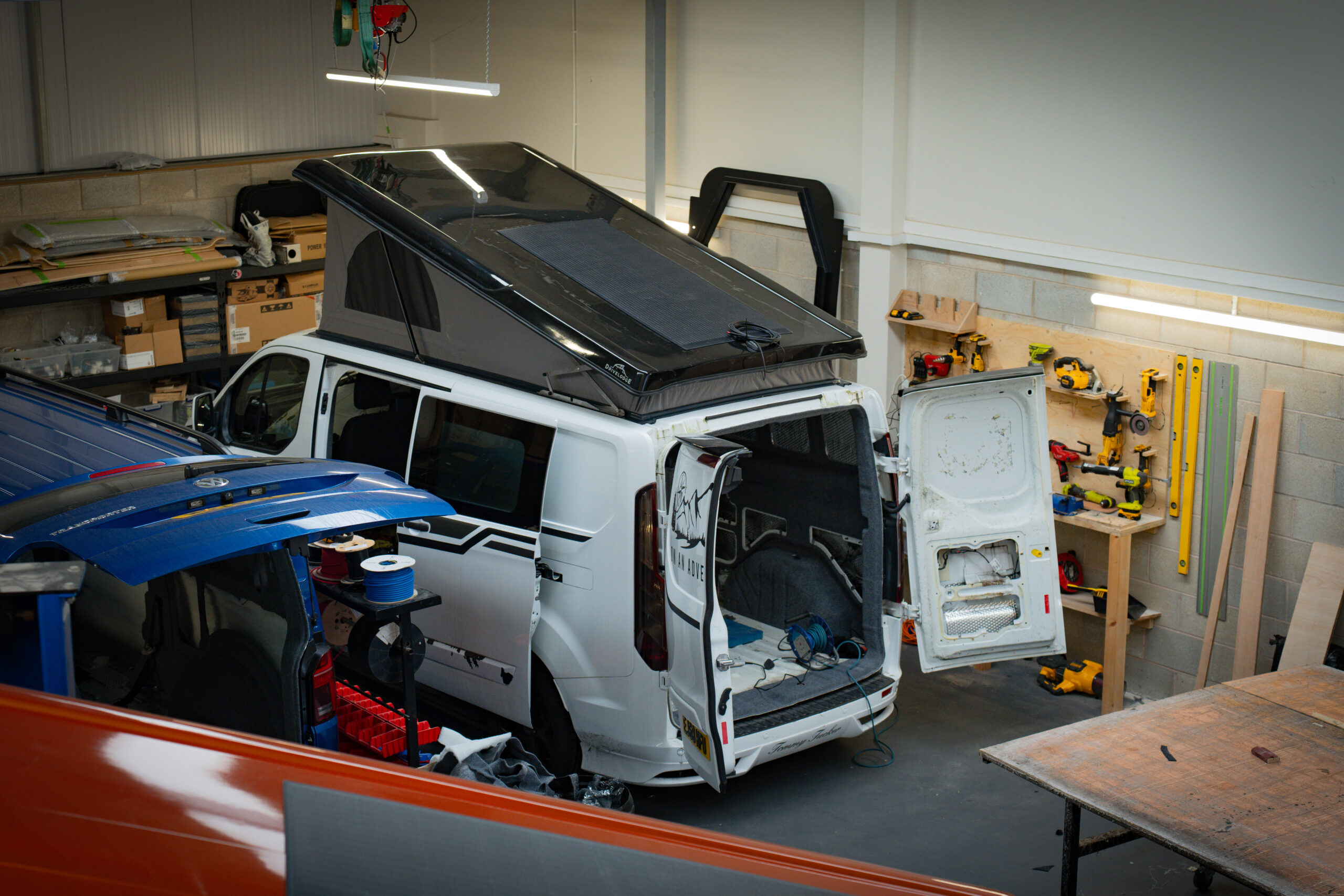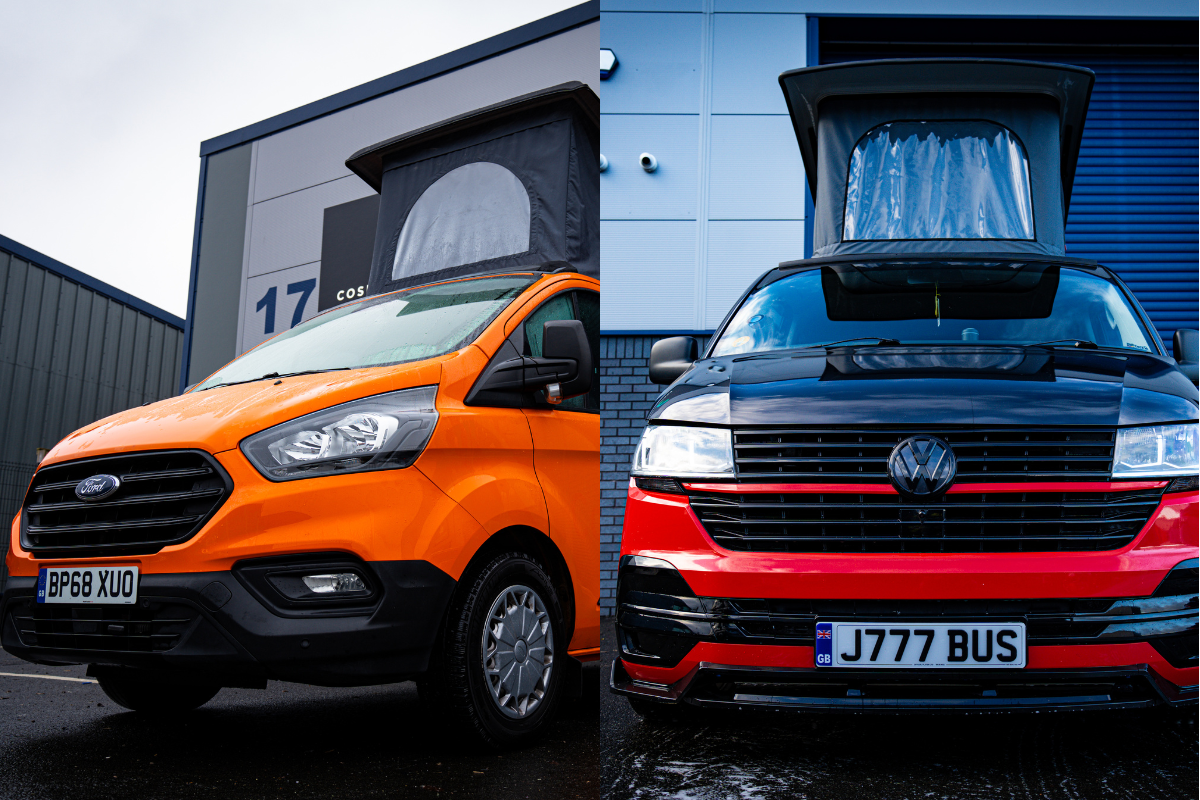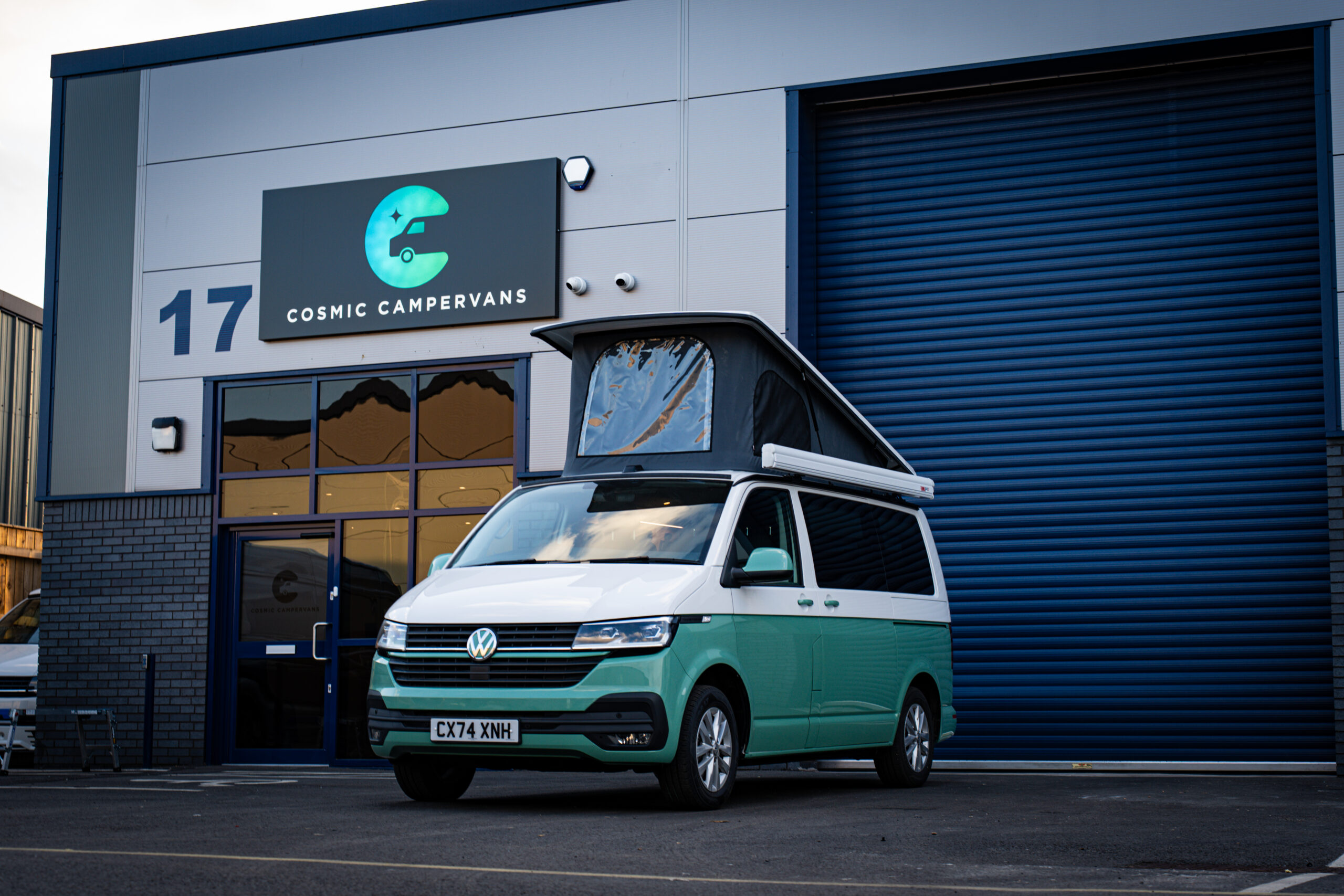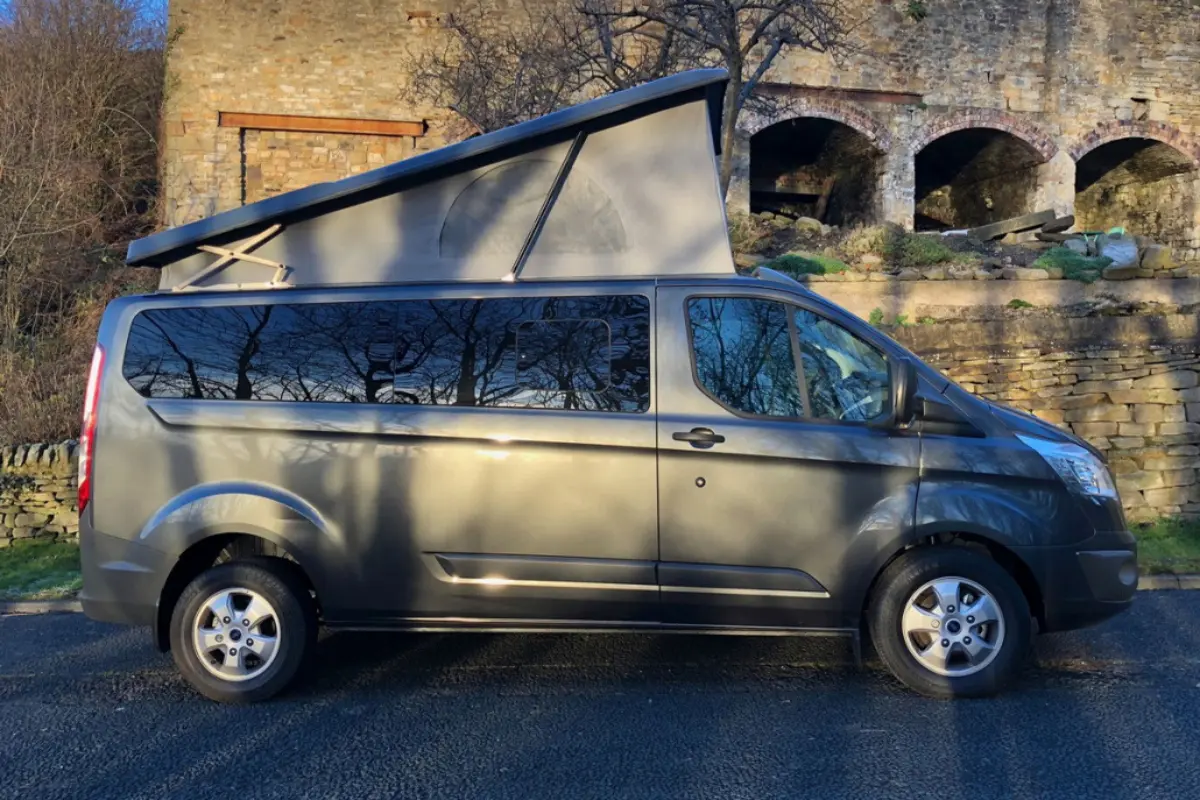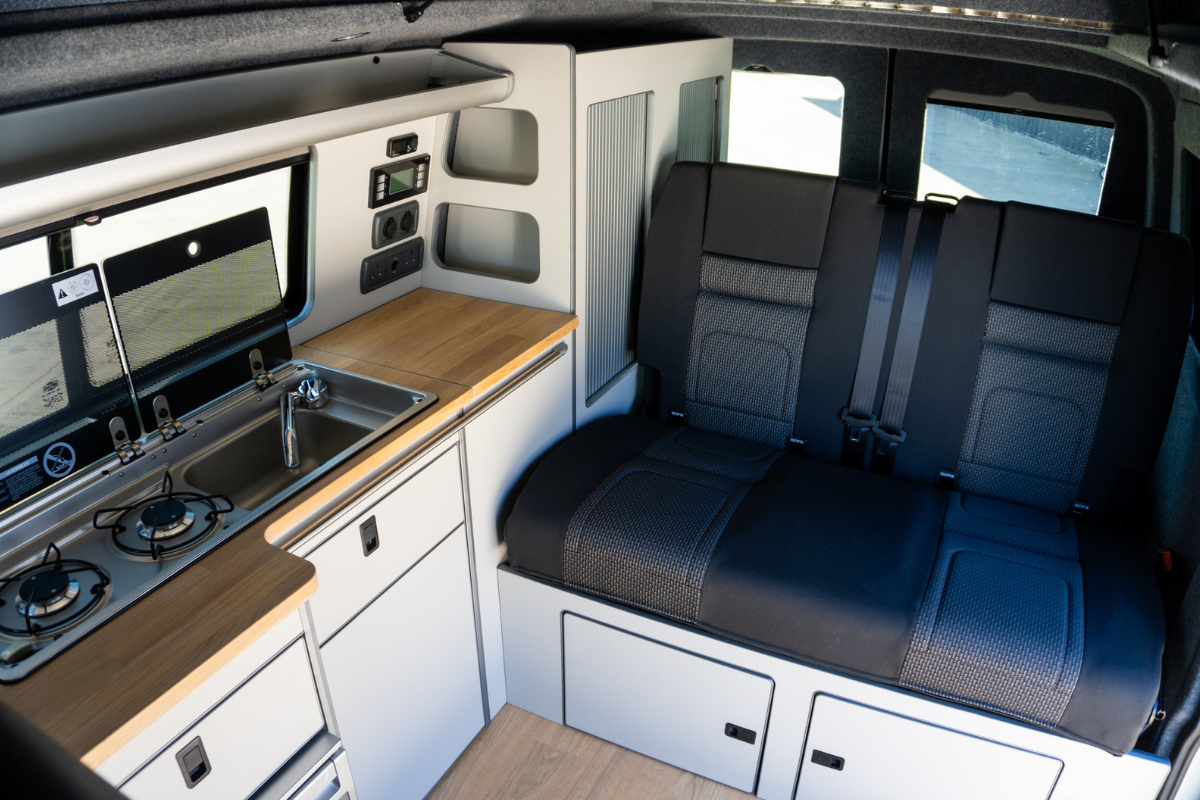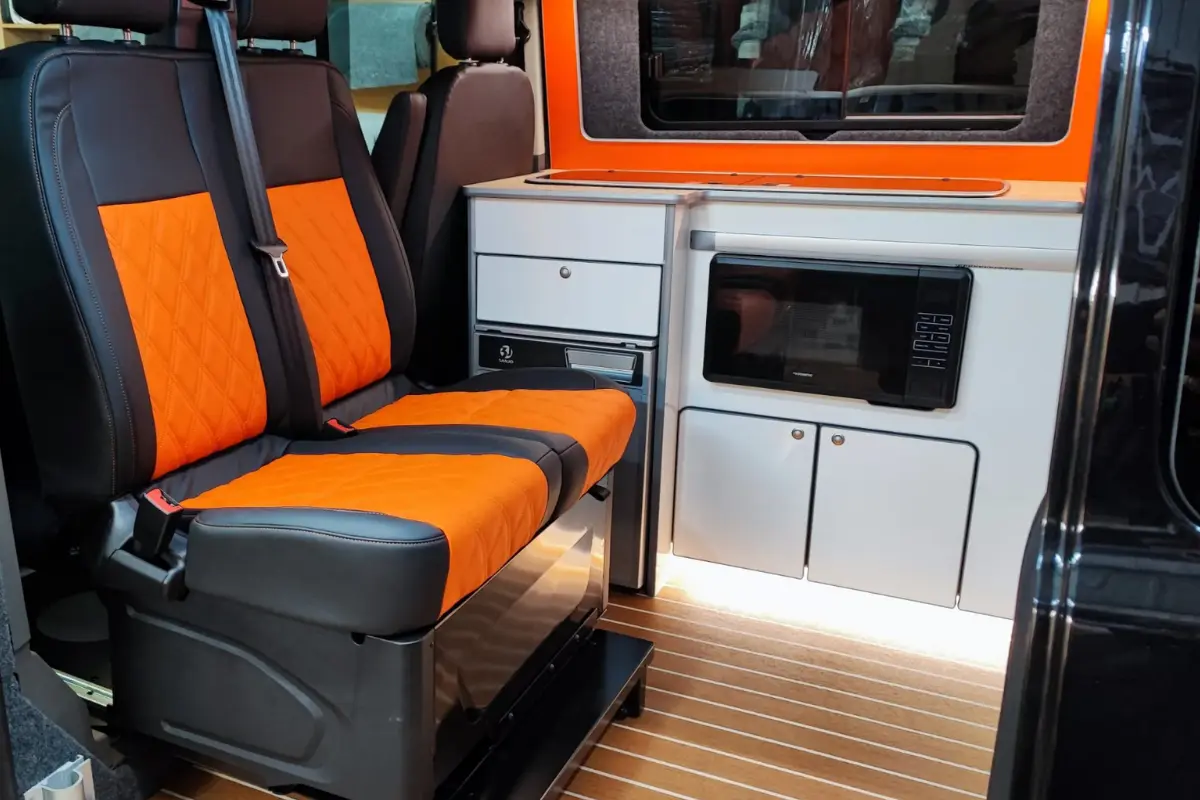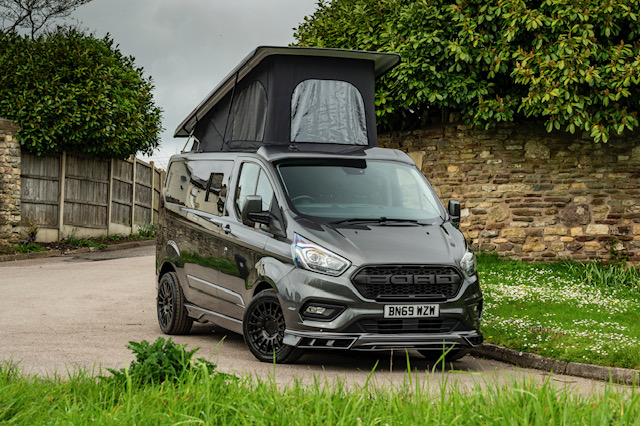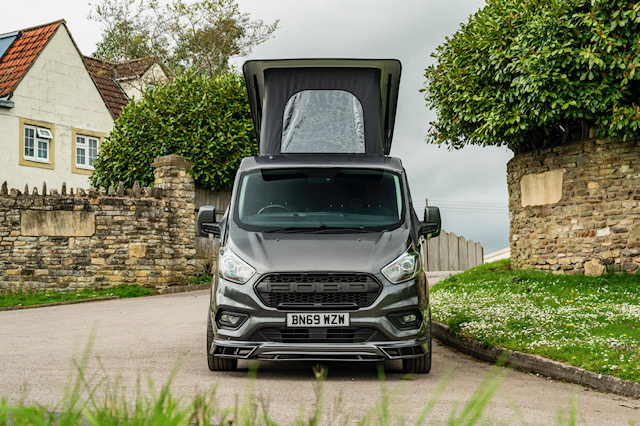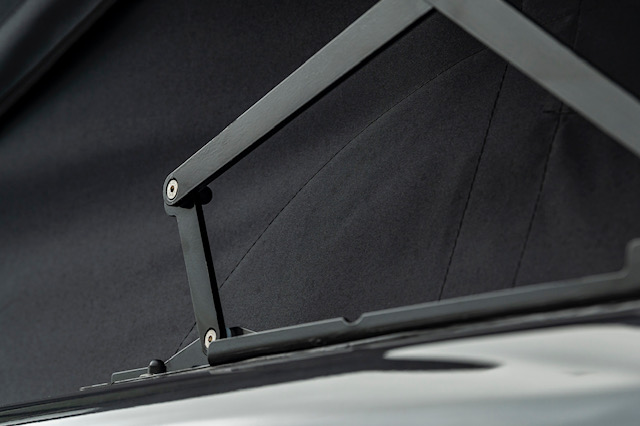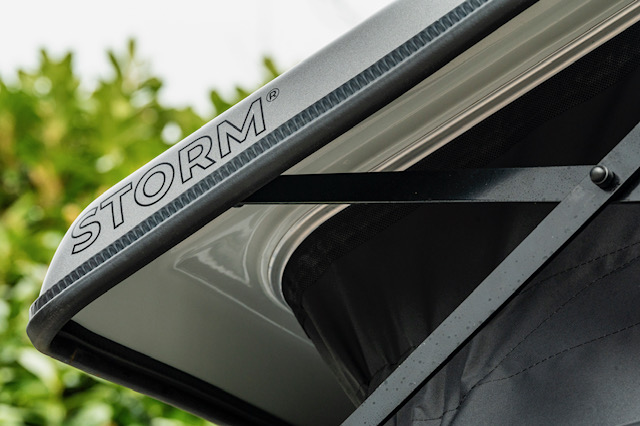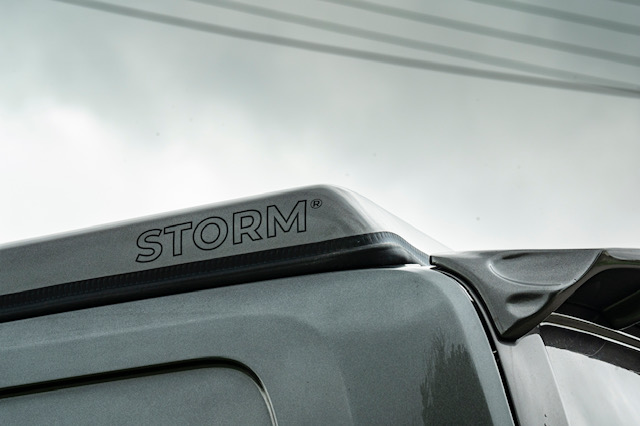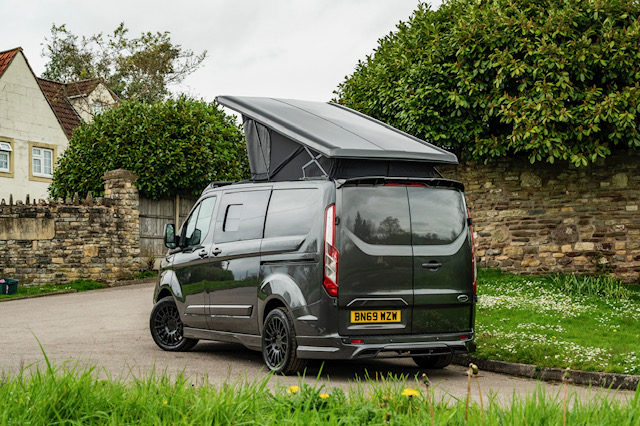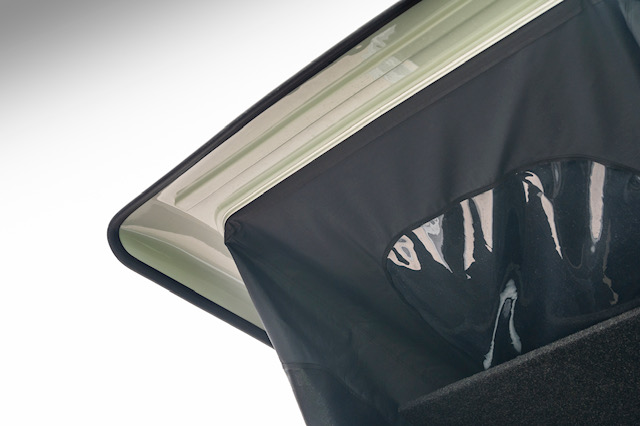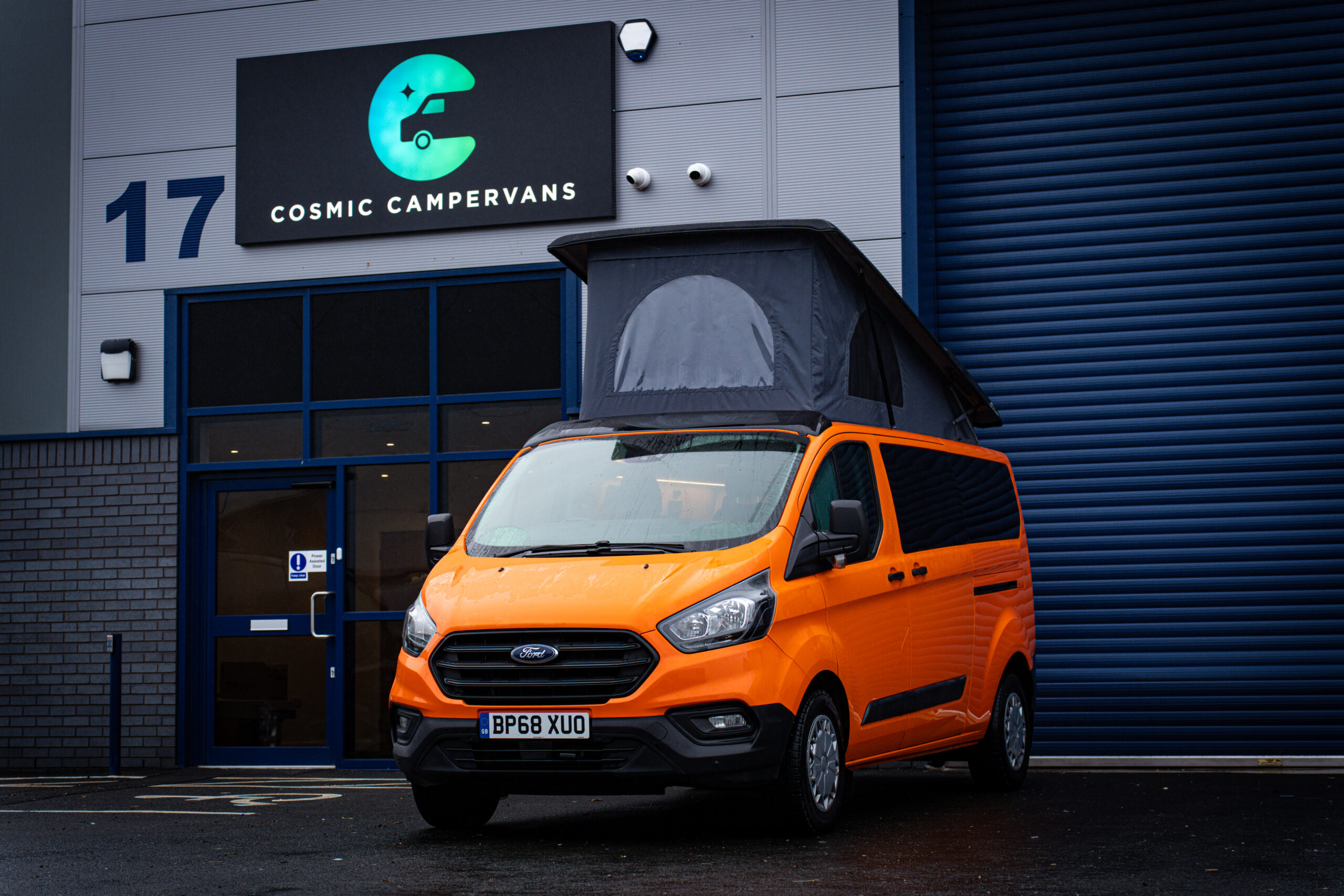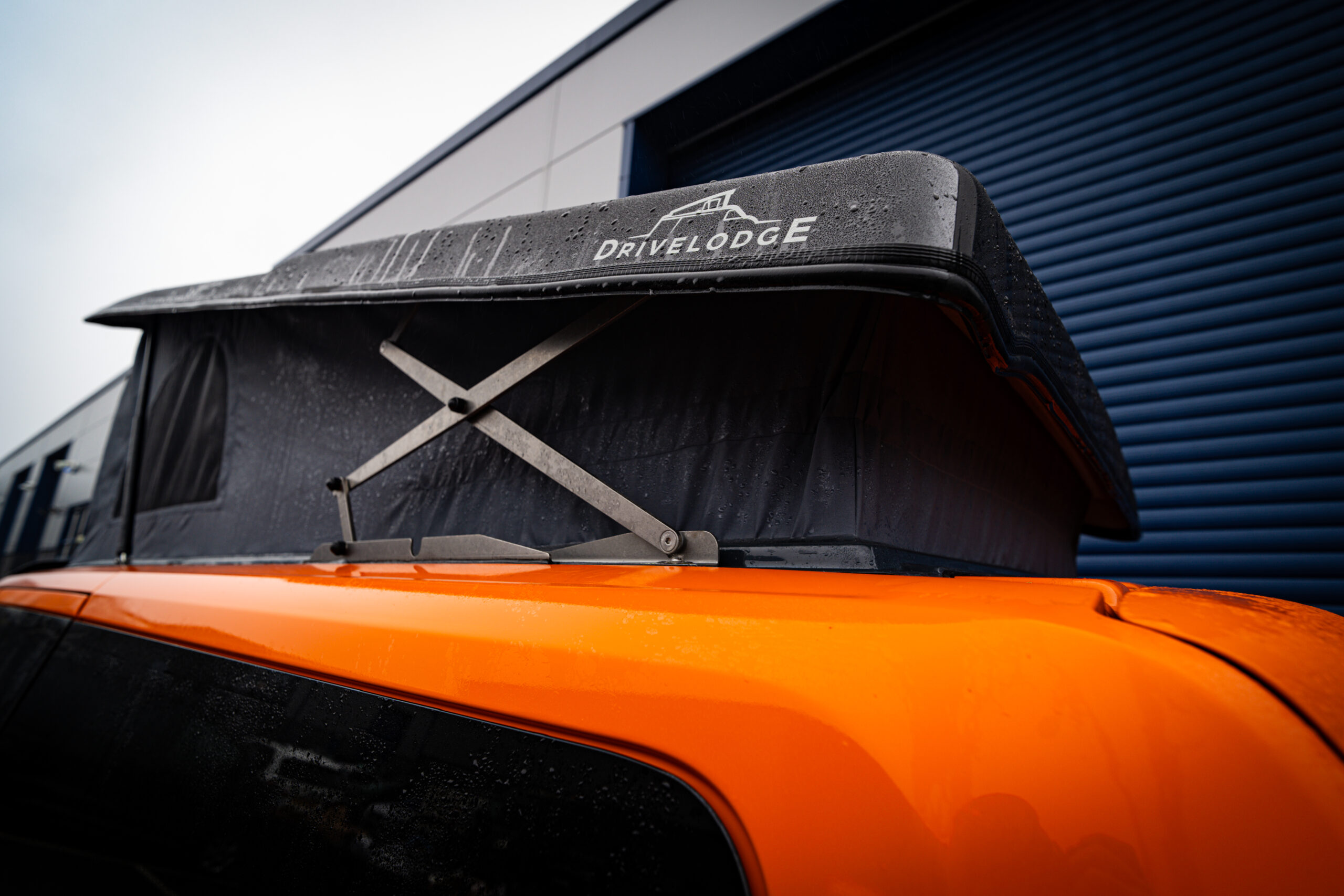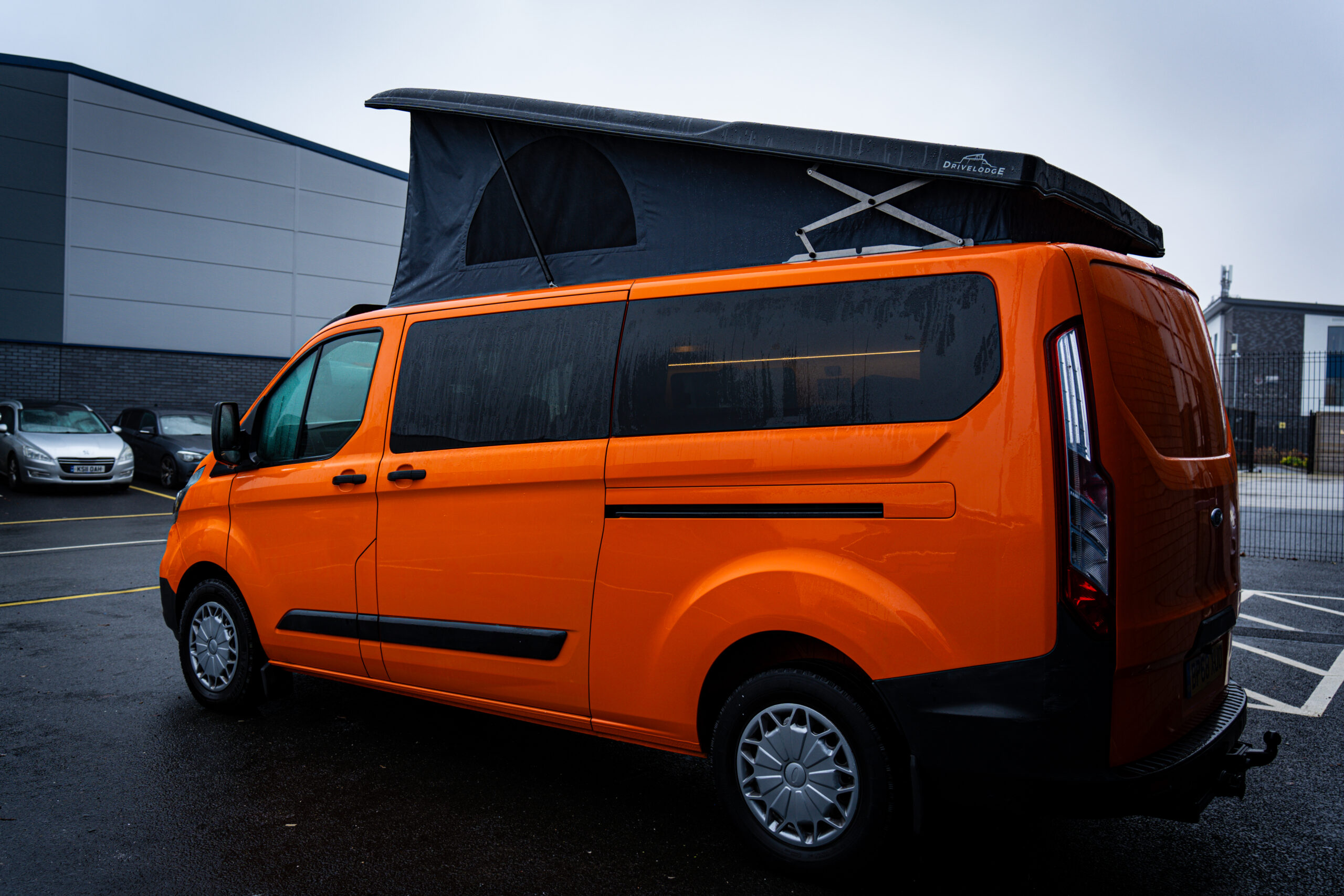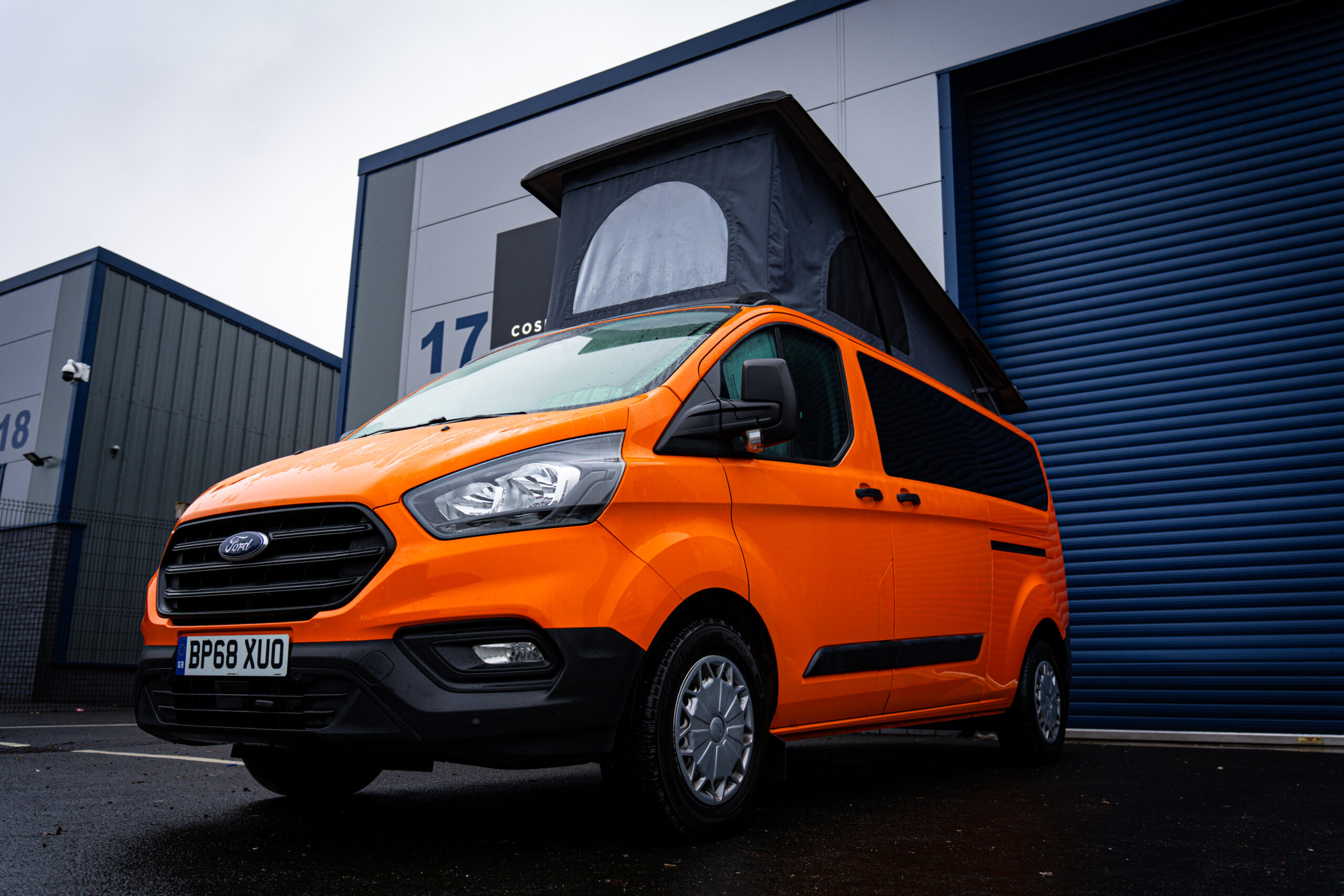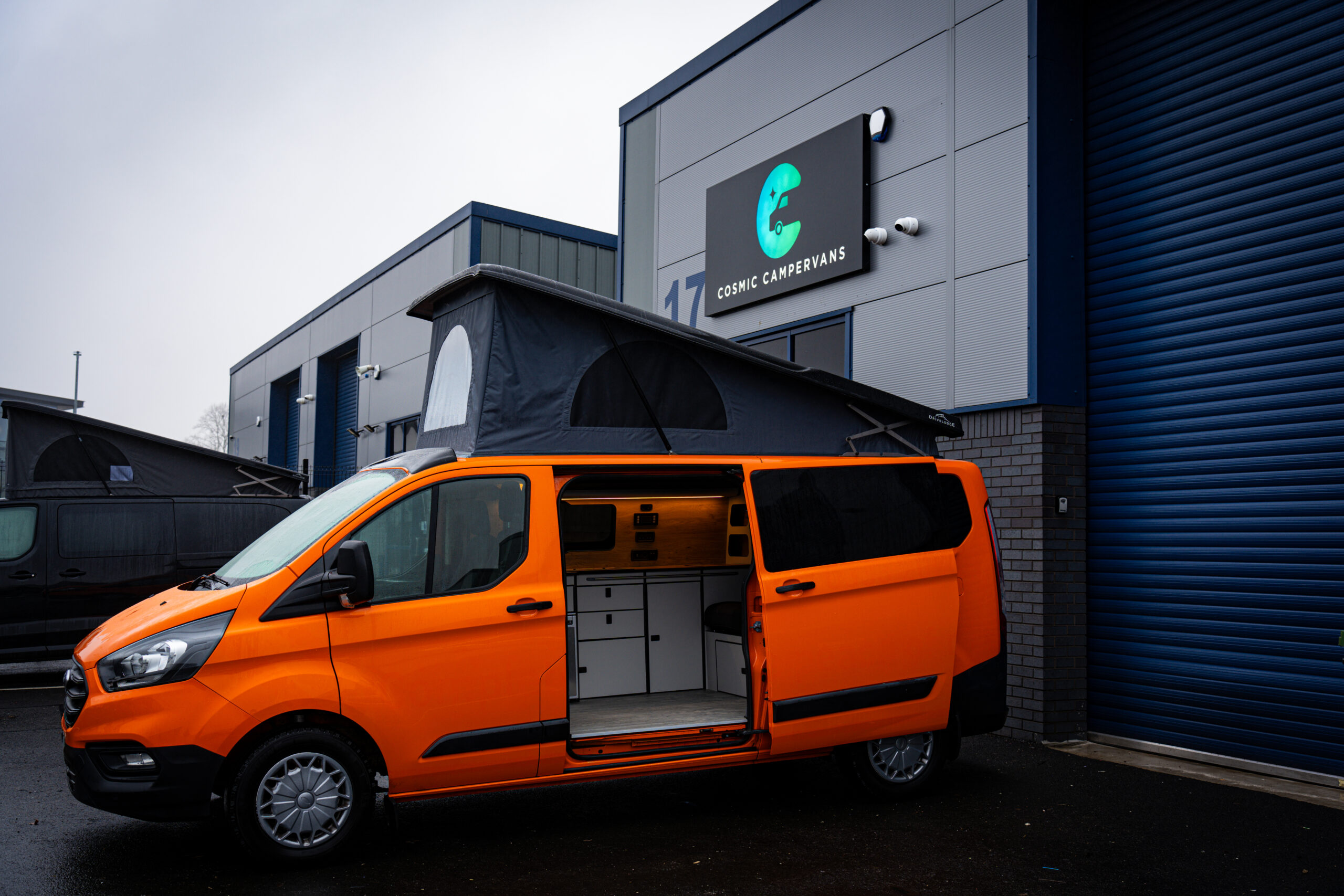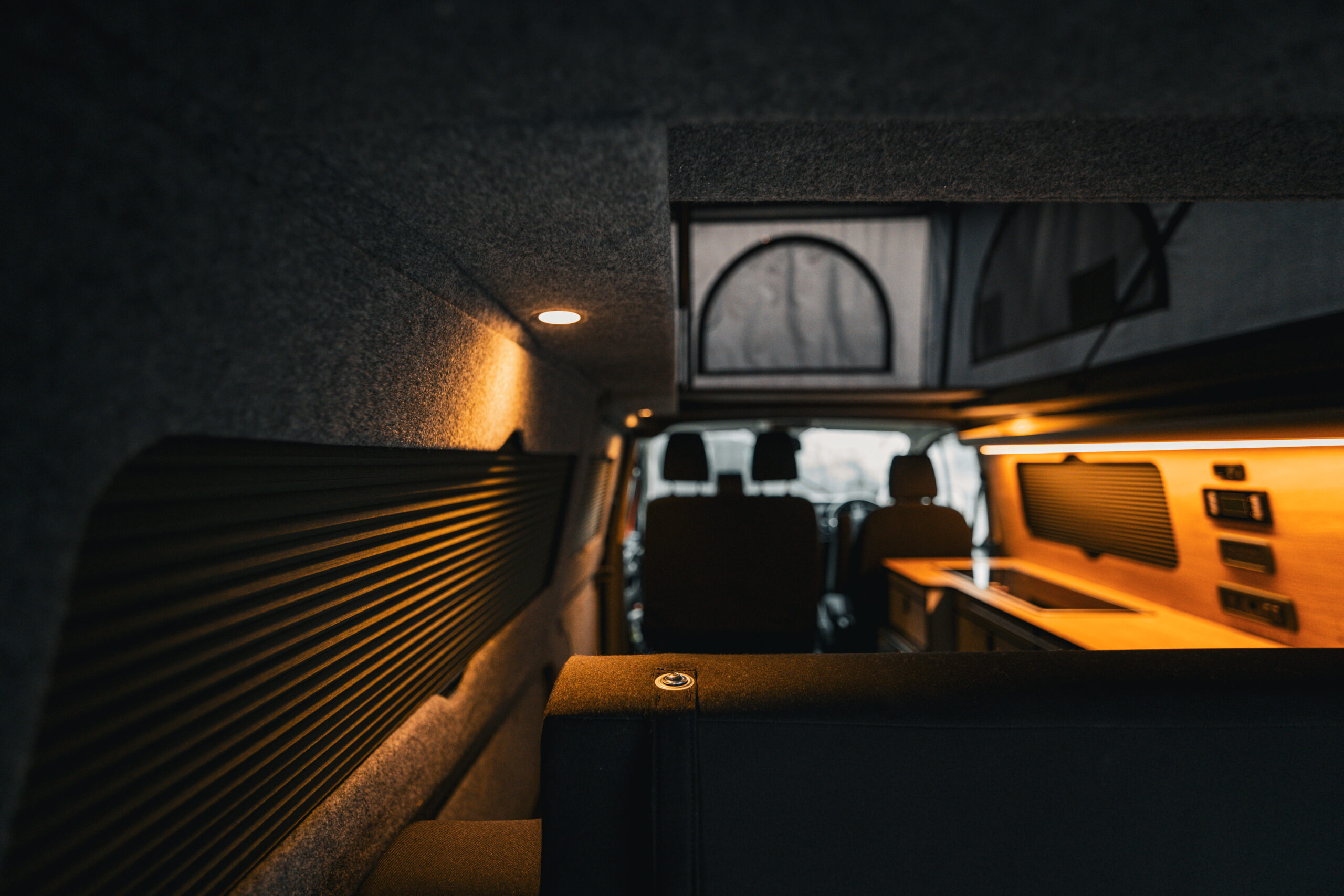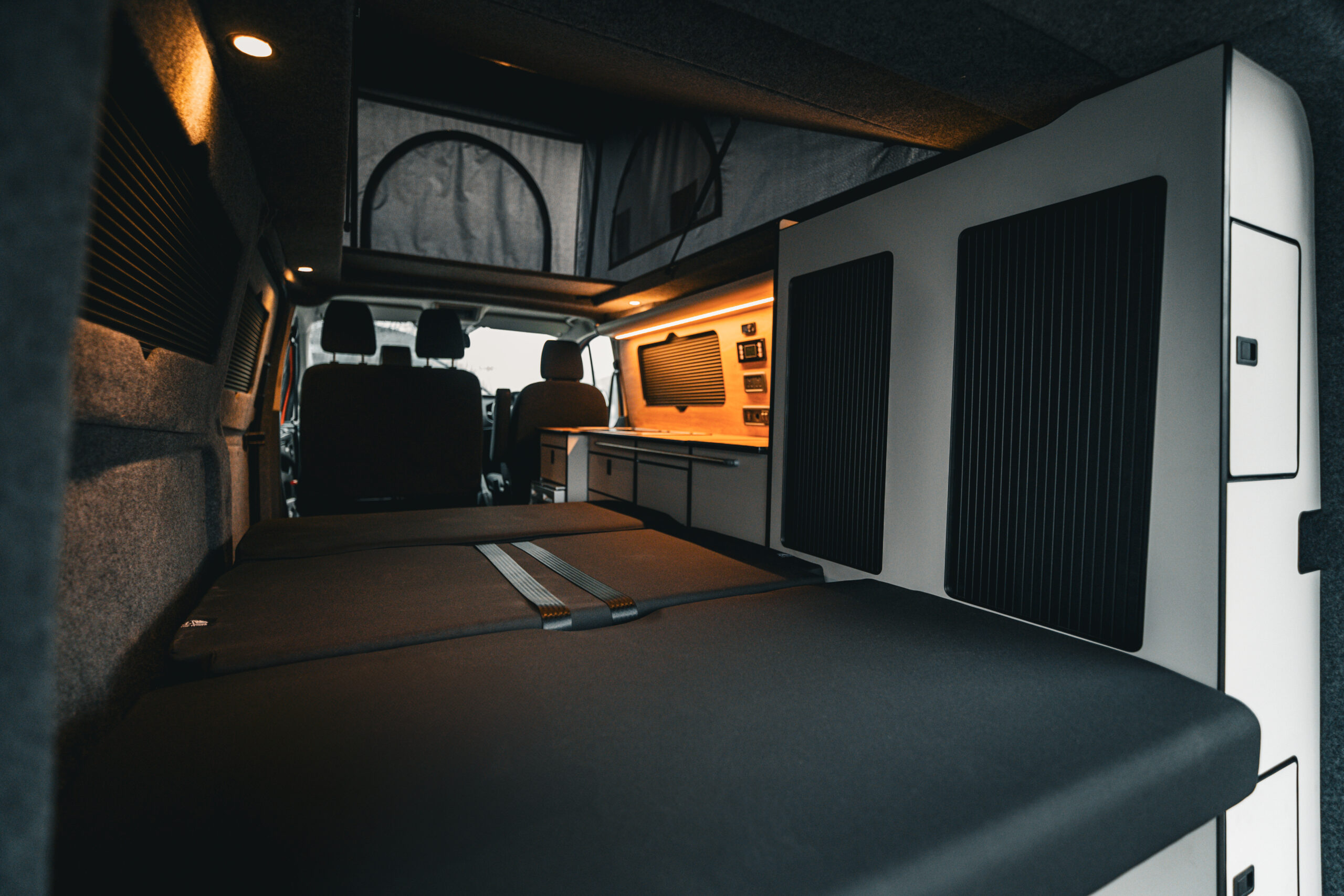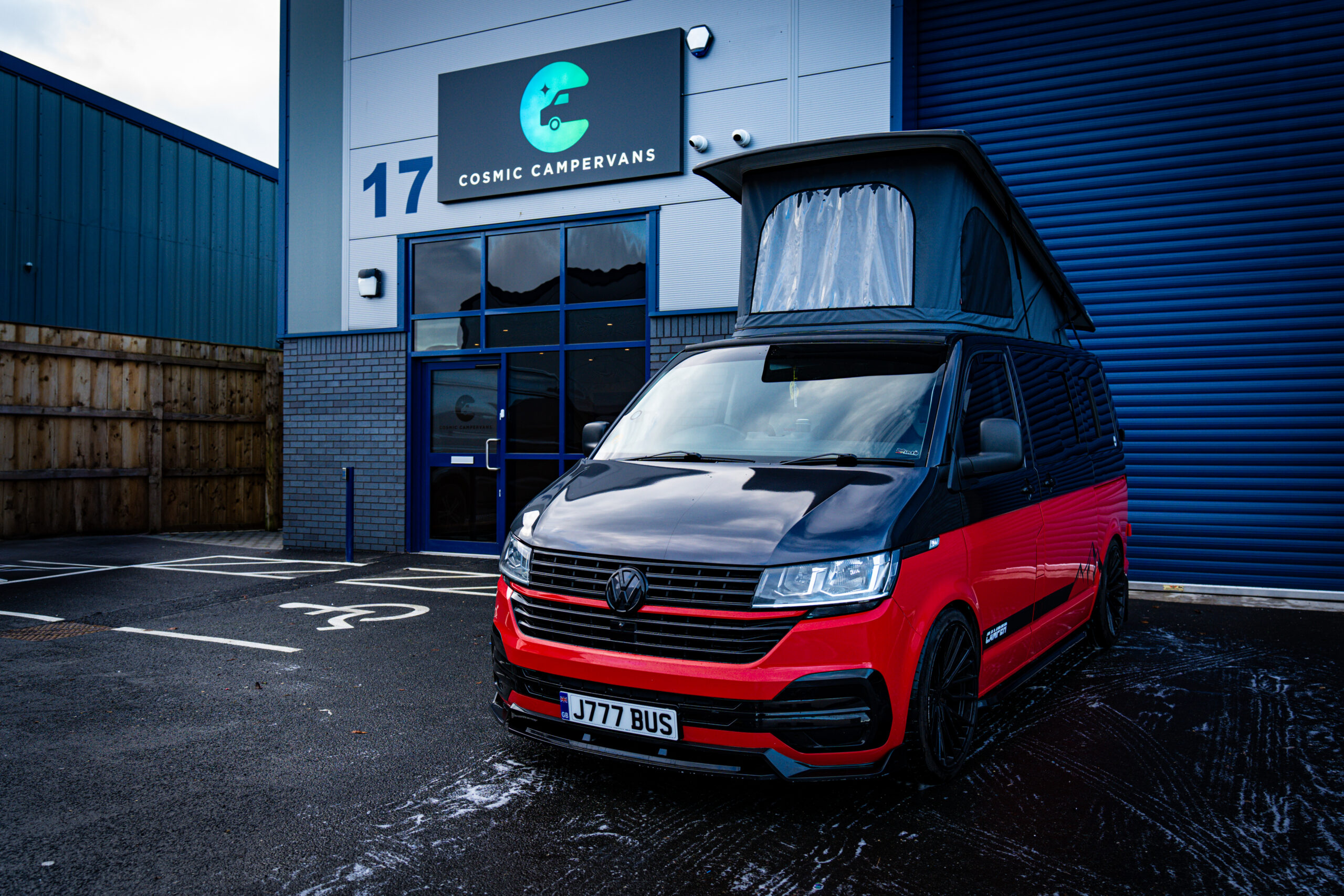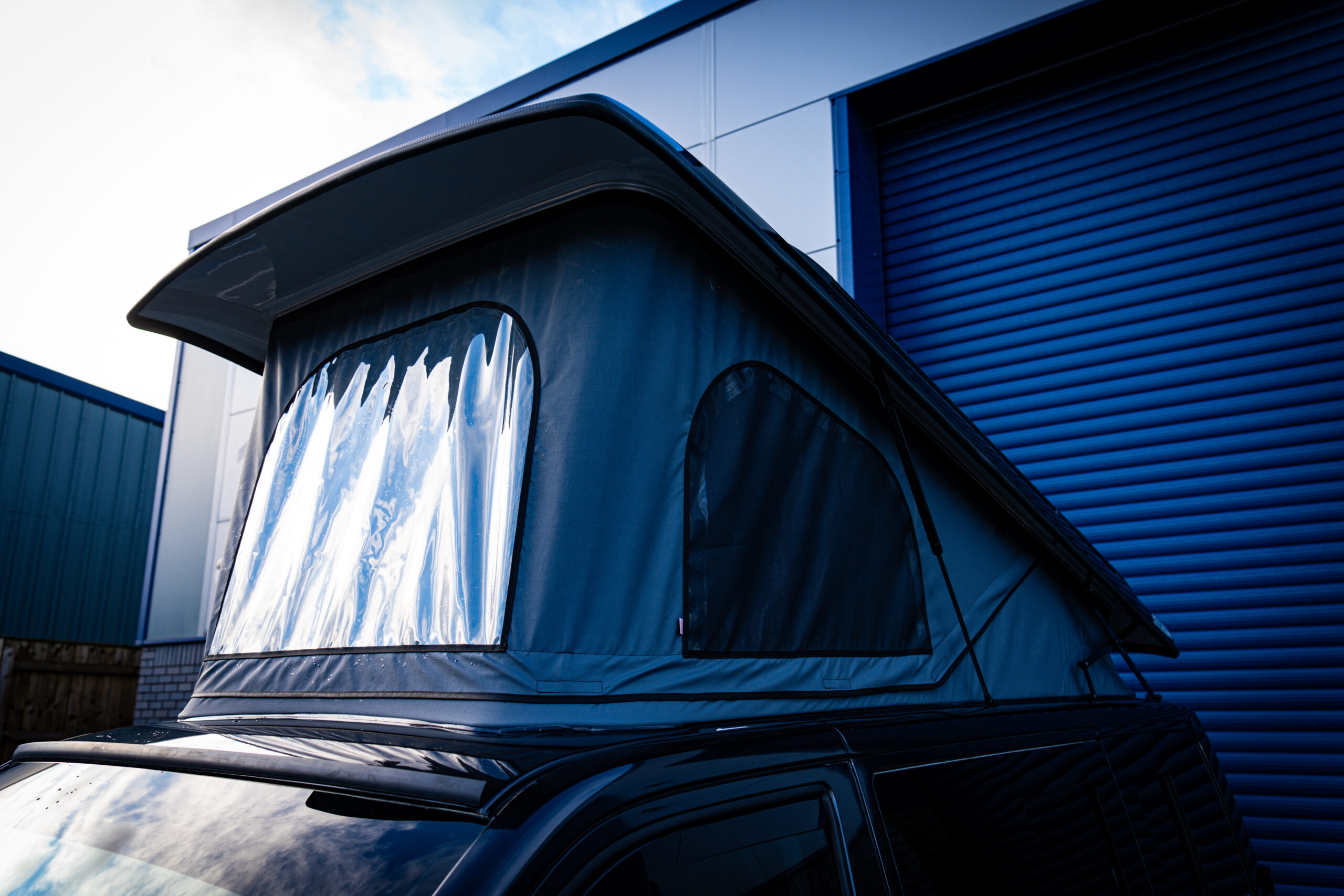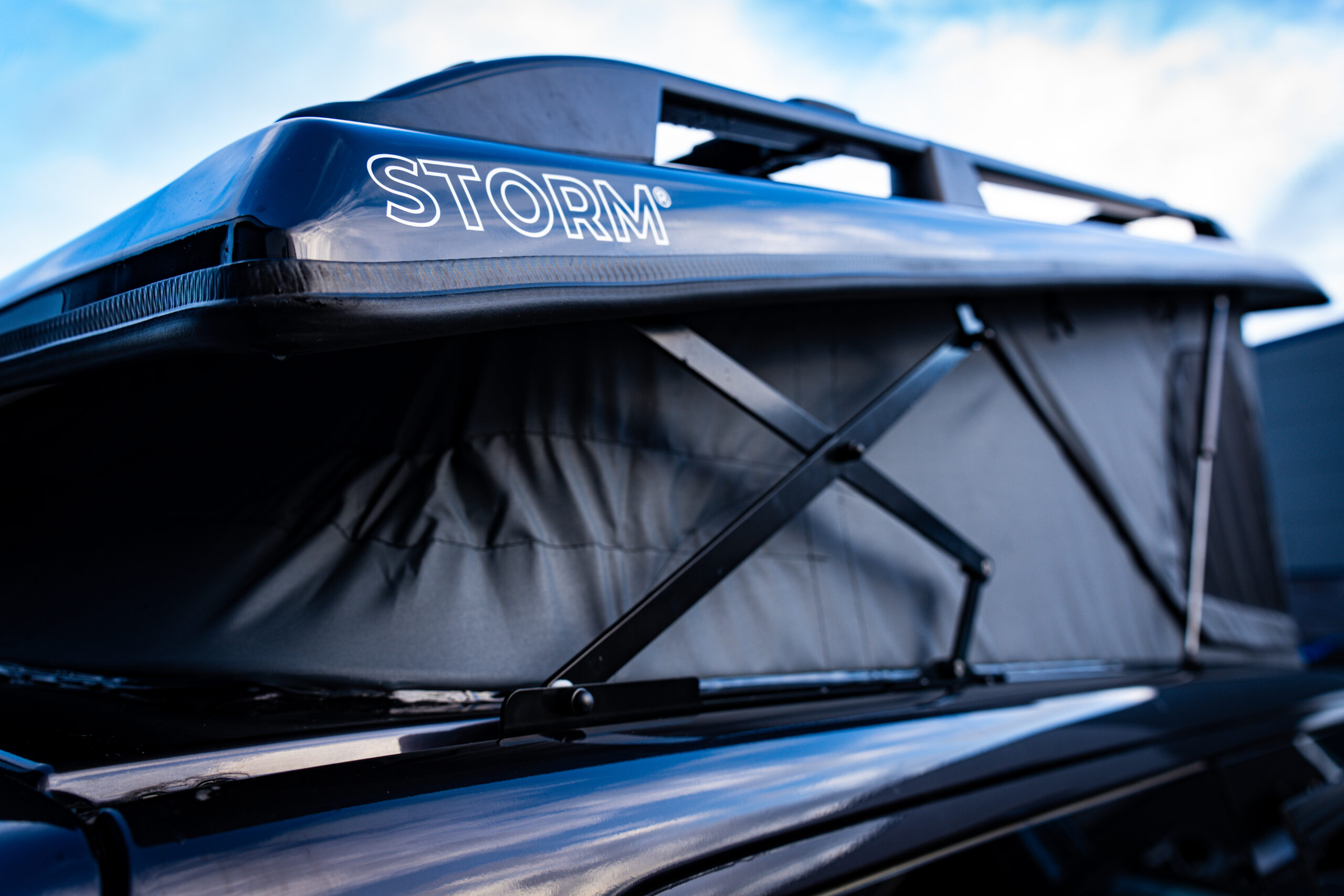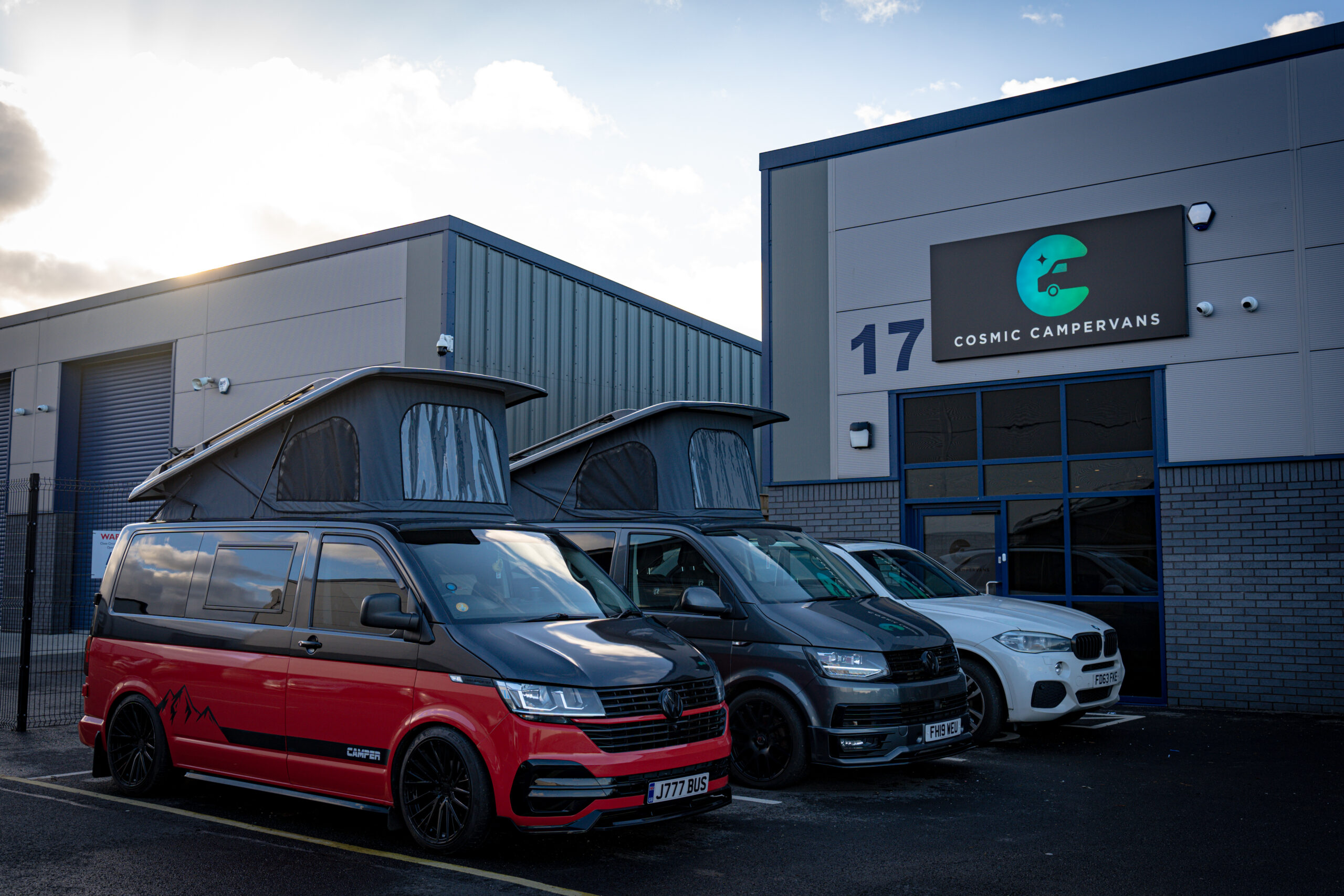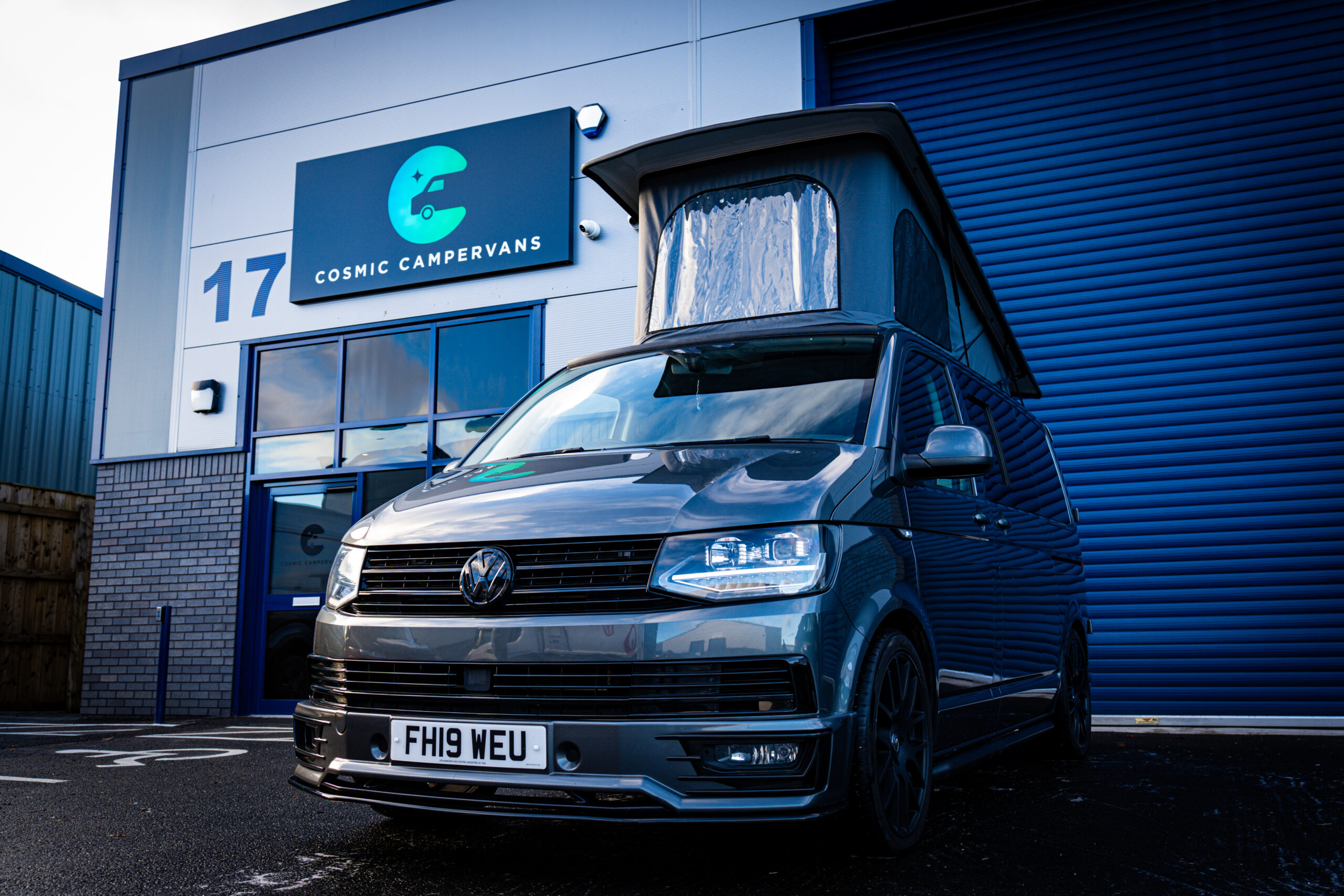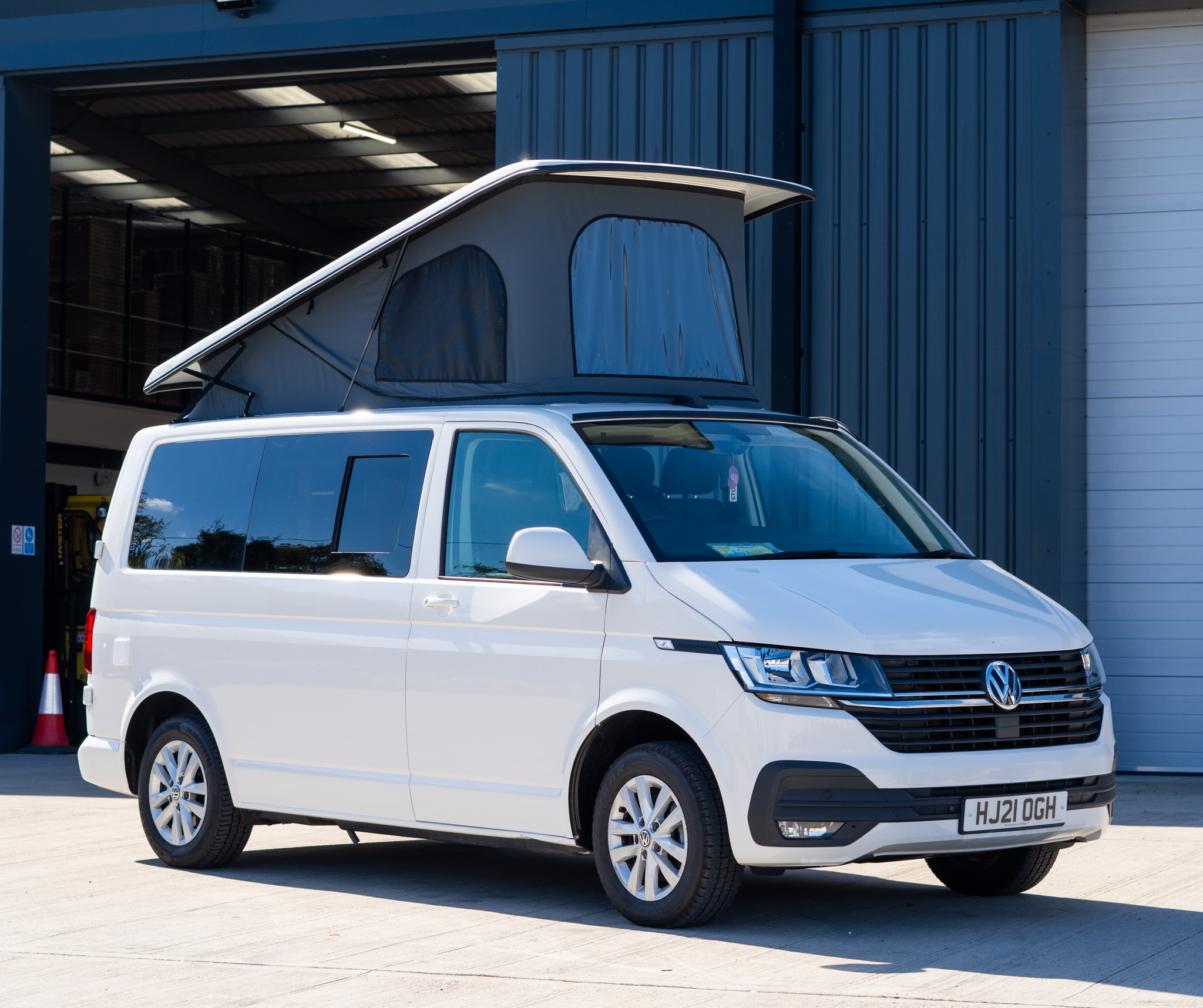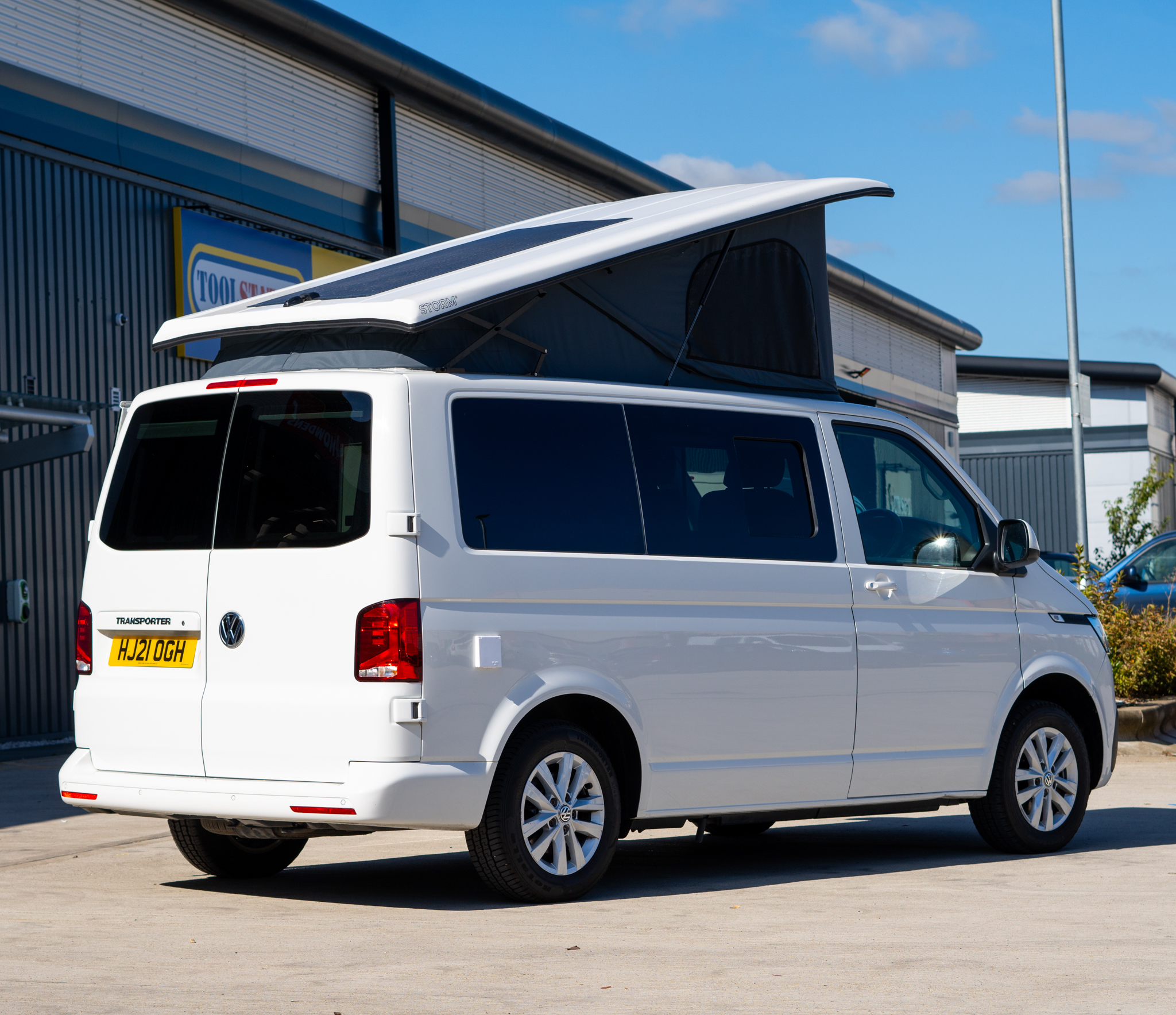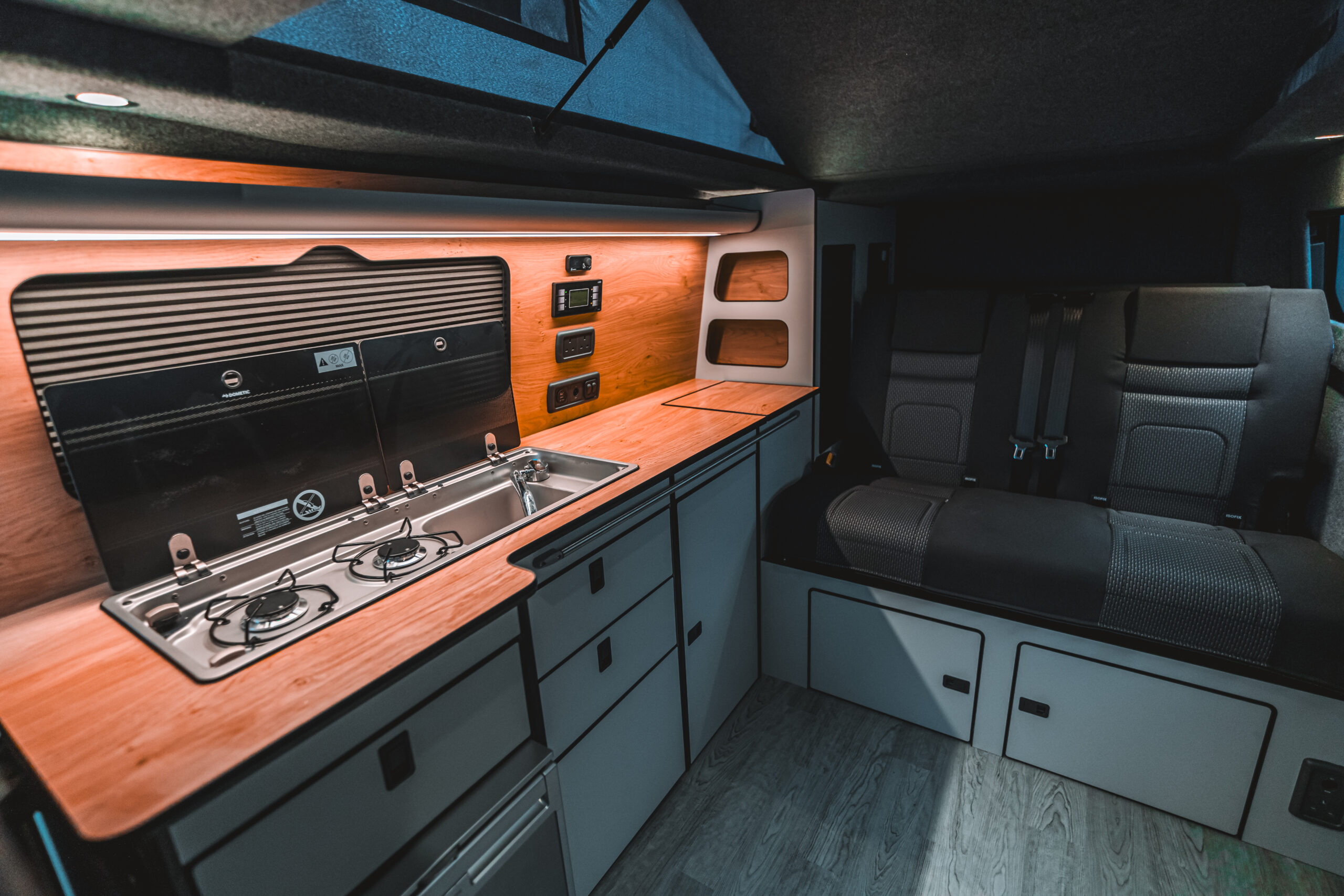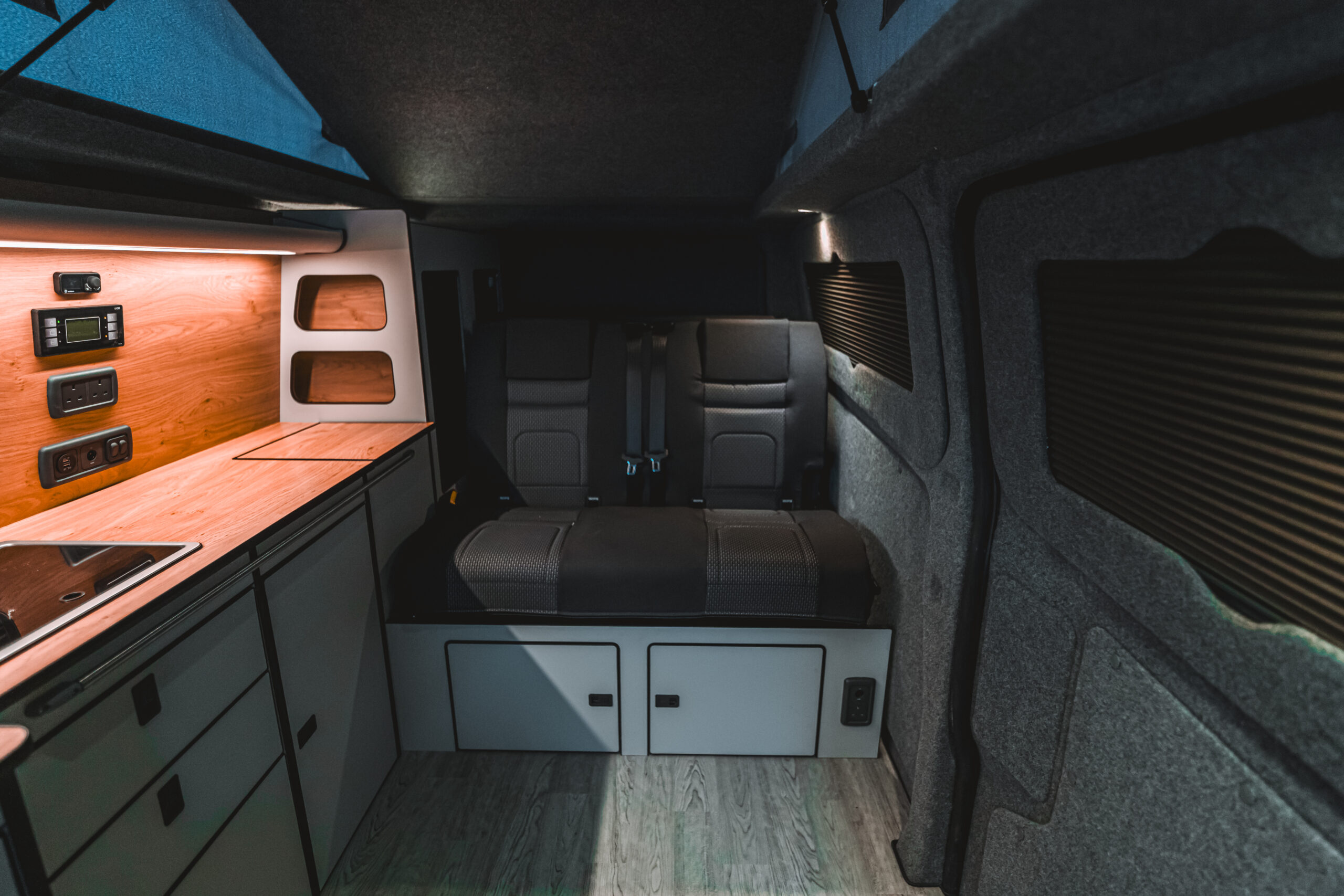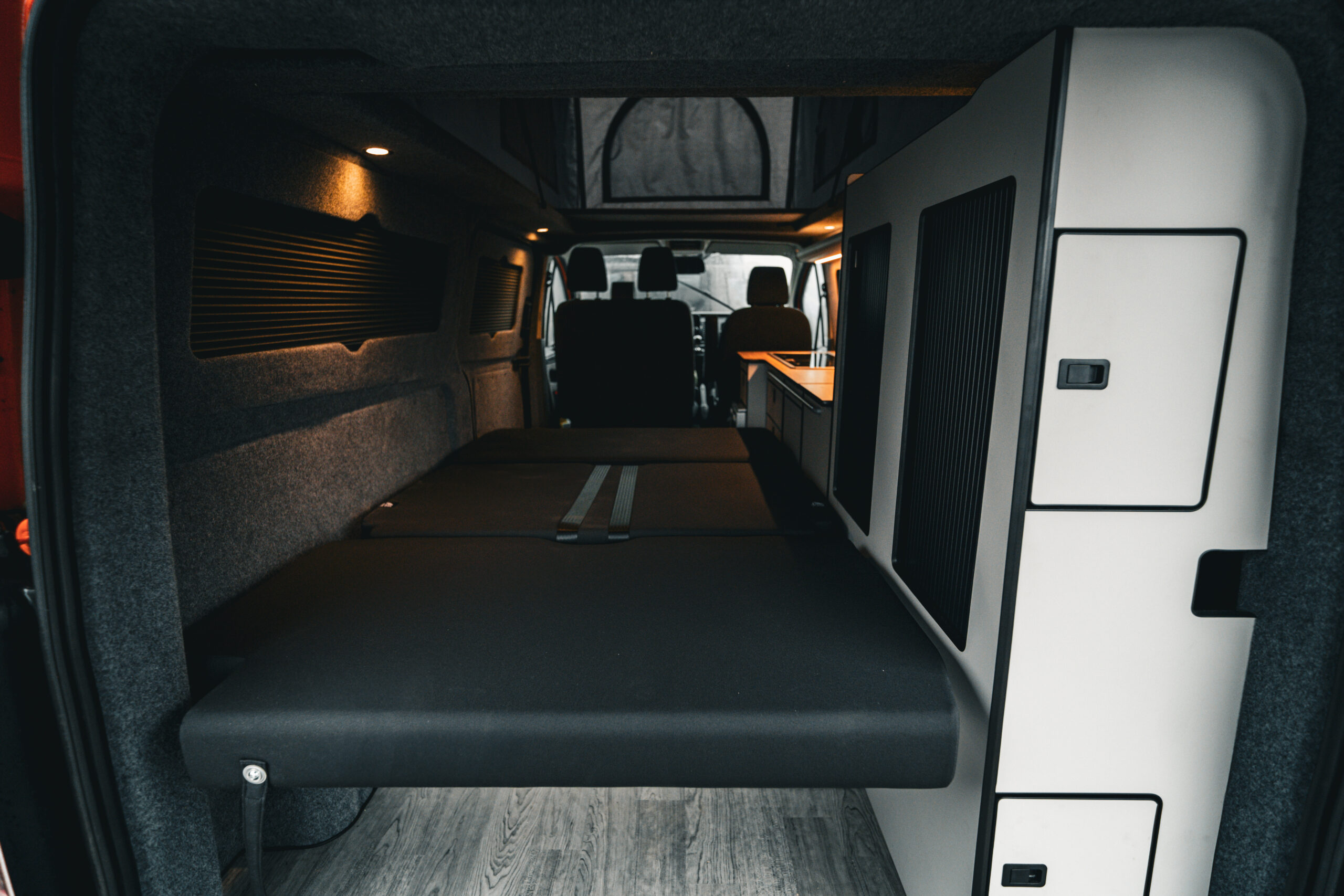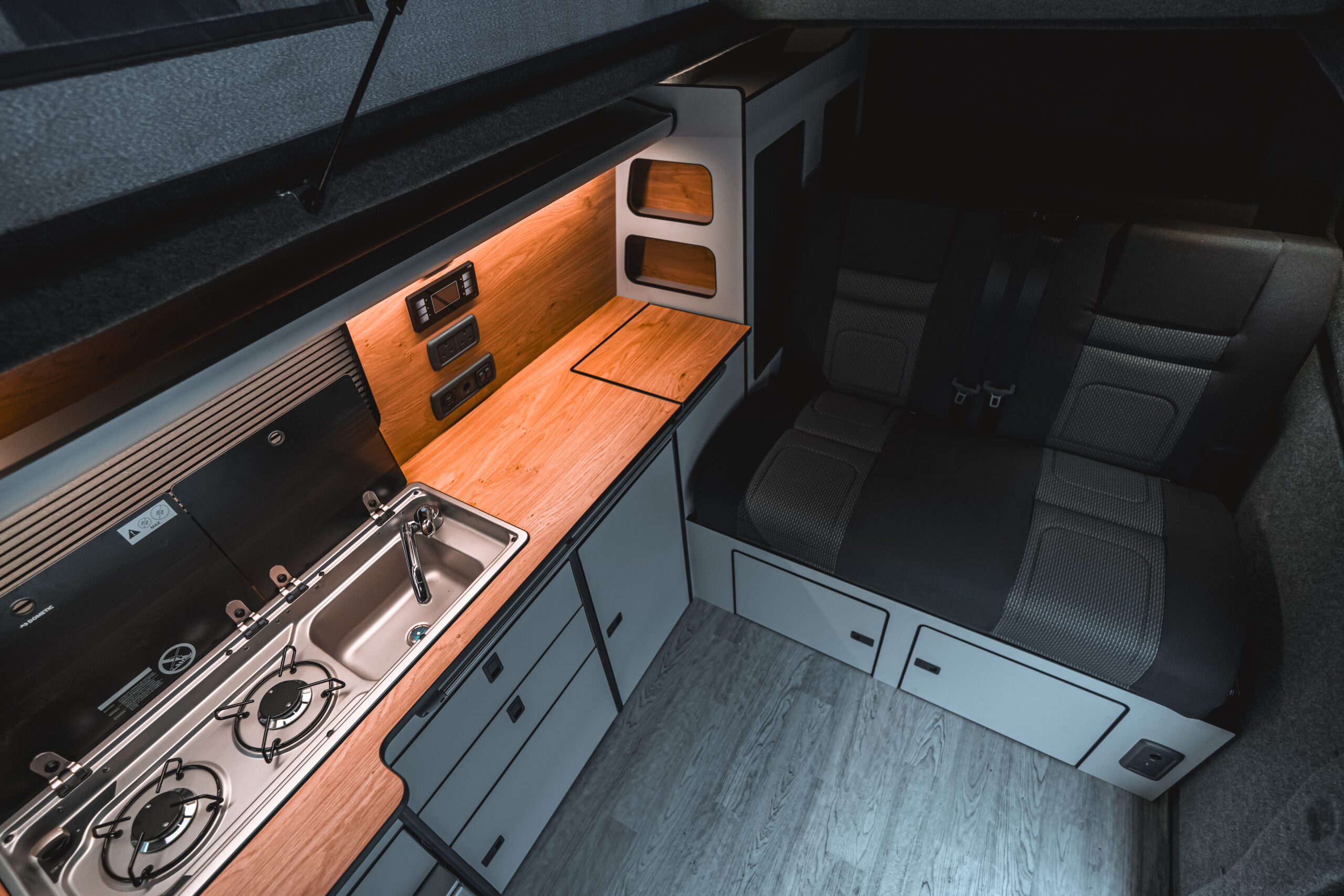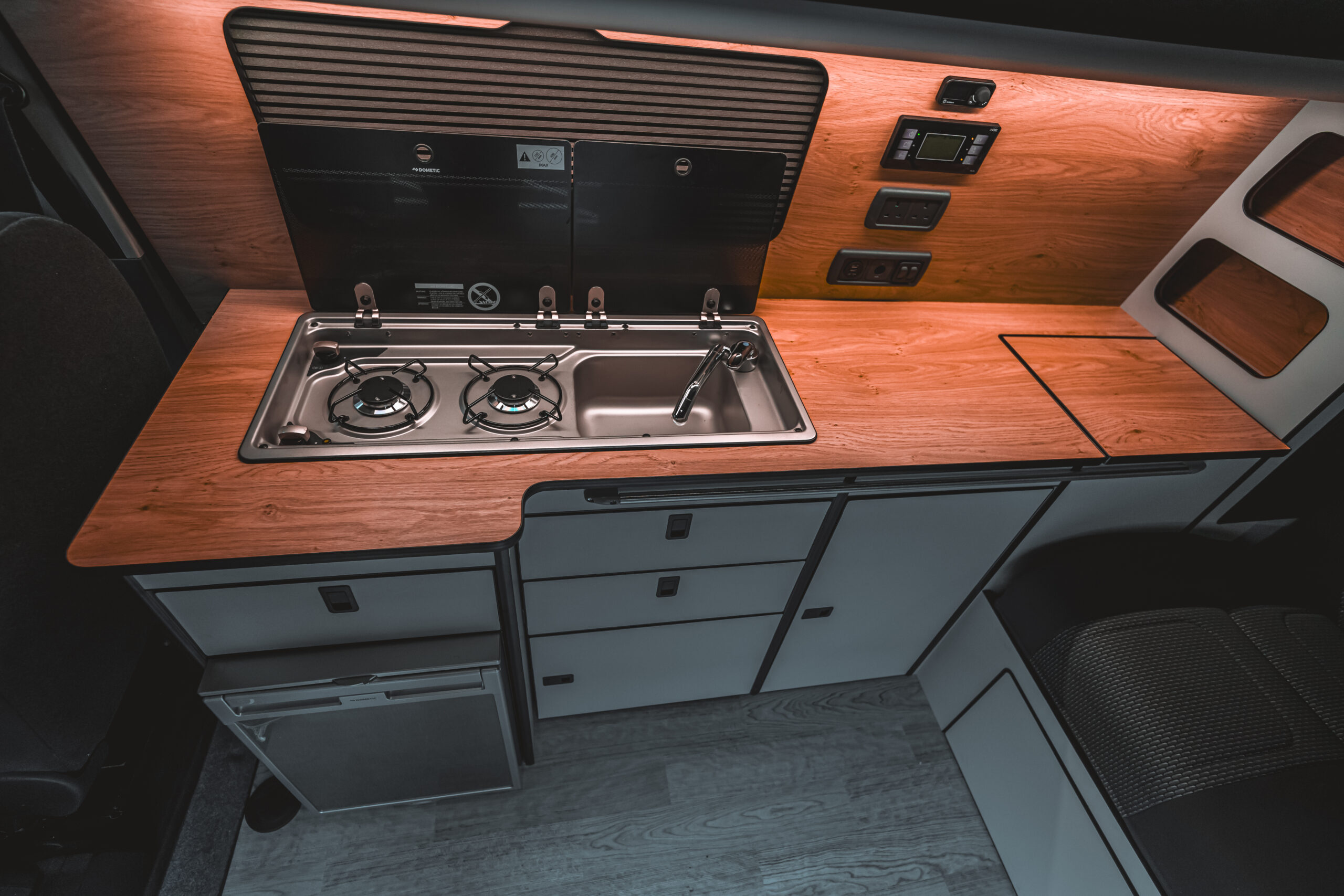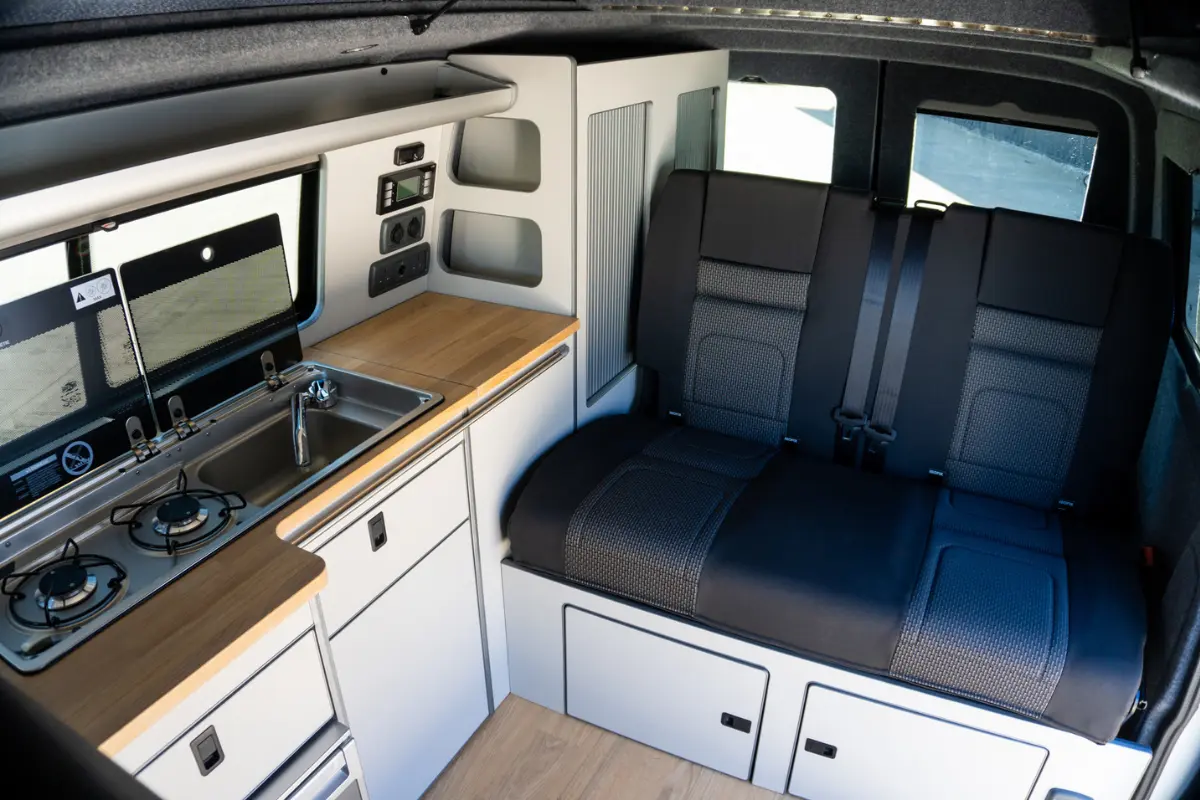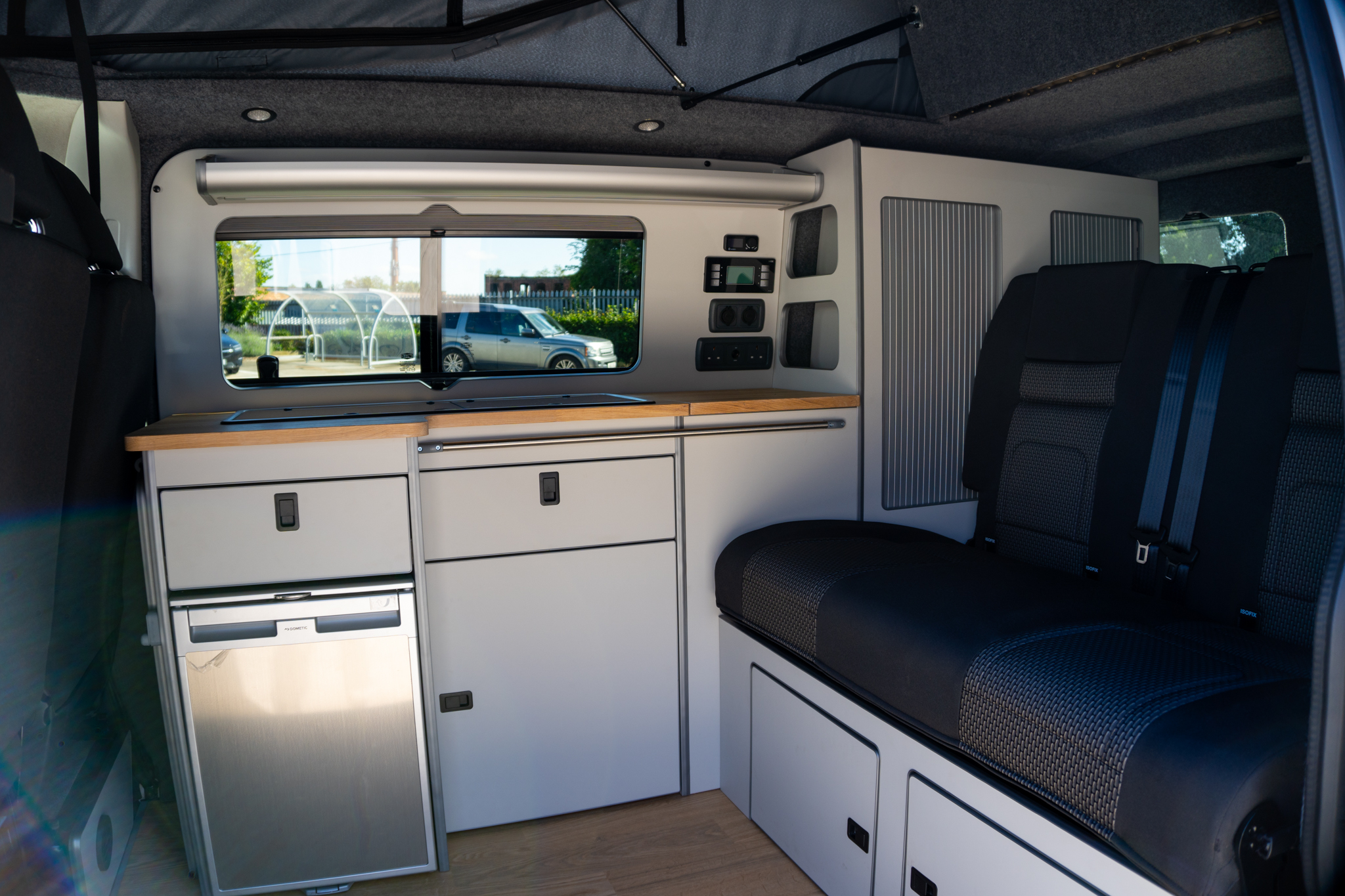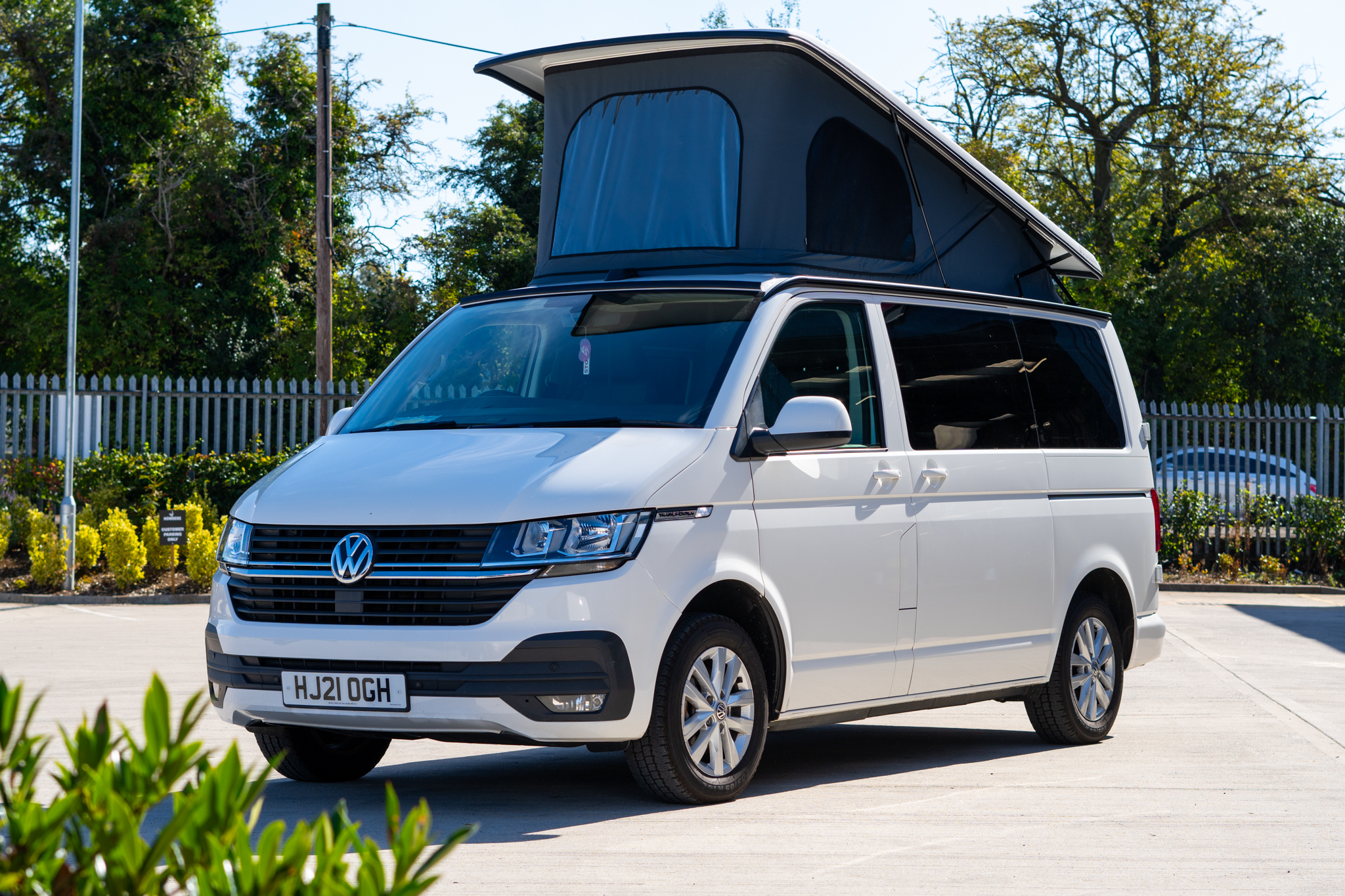Ford Transit Custom Conversions: Understanding Payload Limits
Confused about payloads? You’re not alone!
Over the past 15+ years, I’ve converted hundreds of campervans, ranging from basic makeovers to full-blown luxury fitouts. Ford Transit Customs are one of the best vans to convert, but they don’t come without their challenges.
One thing I’ve learned is that payload limits can make or break your campervan project, and a lot of first time van owners find that out a bit too late (one of the many perils of DIY!).
In this post, I’ll explain what payload limits really mean in plain English, why they matter, and how to stay legal and safe without sacrificing the comfort of your camper. I’ll even share some personal stories (including a few close calls!) to help you avoid common mistakes.
So, grab a cuppa and let’s dive in!
What Are Payload Limits (in Plain English)?
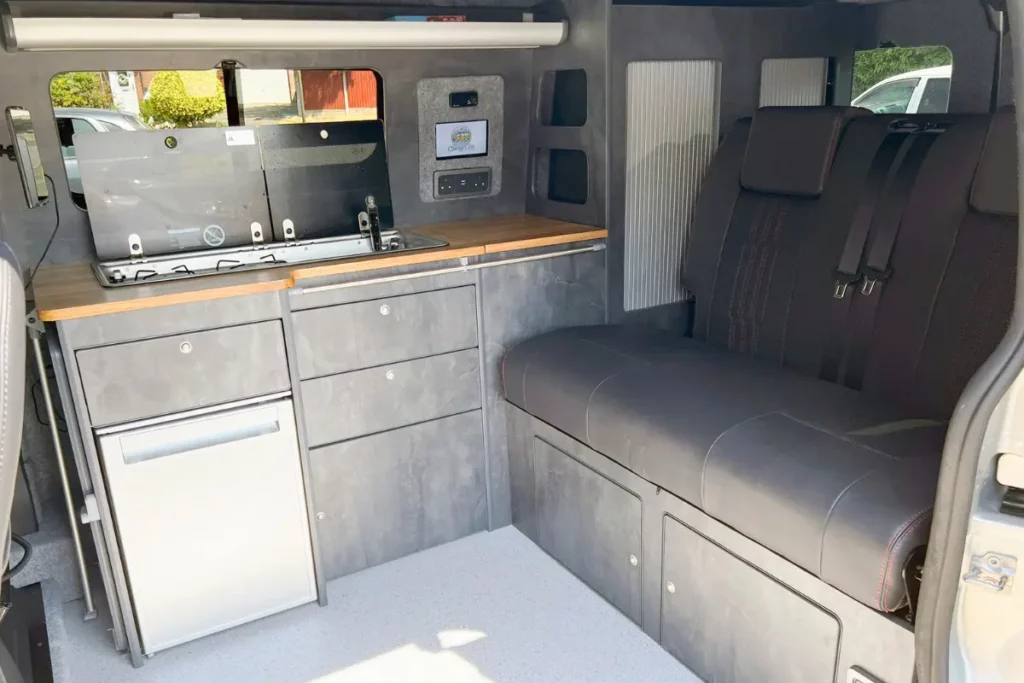
You’ve probably heard the term “payload” thrown around, especially if you hang out on van forums or Facebook groups. It sounds technical, but it’s basically the weight your van can safely carry beyond its own weight.
Think of it like this: your van has a maximum gross vehicle weight (GVW) or Maximum Authorised Mass (MAM), which for most Transit Customs is around 3.0 to 3.4 tonnes (3,000–3,400 kg) depending on the model.
The payload is everything and everyone you add to the van that contributes to that weight.
In real terms, payload = people + fuel + luggage + conversion fittings + all your gear. It’s all the stuff you’ll put in your Ford Transit Custom camper.
For example, imagine your Transit Custom has a max weight of 3,000 kg and it weighs 2,000 kg empty (just the van itself). The difference – 1,000 kg – is your payload capacity.
That 1,000 kg has to cover you (the driver), any passengers, a full tank of diesel, your fresh water tank, camping gear, the cabinets and bed you install. Literally everything apart from the bare van.
Is it hard to reach the payload limit?
Now, 1,000 kg might sound like plenty, but you’d be surprised how quickly it gets used up.
Two adults can weigh around 150 kg together. A full tank of fuel in a Transit Custom (~80 litres of diesel) adds roughly 65–80 kg. If you carry 50 L of water that’s another 50 kg (because 1 L of water = 1 kg).
Toss in food, clothes, cooking equipment, maybe 20–30 kg of camping gear – it adds up fast. And that’s before we count the actual camper conversion fixtures like the bed, cabinets, pop top roof, fridge, etc. 😅
Basically, payload is your van’s carrying budget. It’s like packing for a holiday with a luggage weight limit – you have to be selective in what you bring so you don’t exceed the allowance.
In a campervan context, that means balancing all the comforts and gadgets you want with the weight your Ford Transit Custom can legally handle.
What’s the payload for a Ford Transit Custom?
The Ford Transit Custom’s payload limits vary by model. In fact, Transit Custom models have payloads ranging from under 700 kg up to nearly 1,500 kg in the most heavy-duty versions.
Most folks I see around Derby with a Transit Custom have a mid-range model – often around 3.0–3.2 tonne GVW – giving a payload in the ballpark of 1,000–1,200 kg. That’s a solid capacity (actually a tad higher than a typical VW Transporter, which ranges ~800–1,300 kg).
But no matter if it’s 800 kg or 1,200 kg, the principles are the same: you must stay within that limit.
Why Payload Limits Matter for Your Camper Conversion
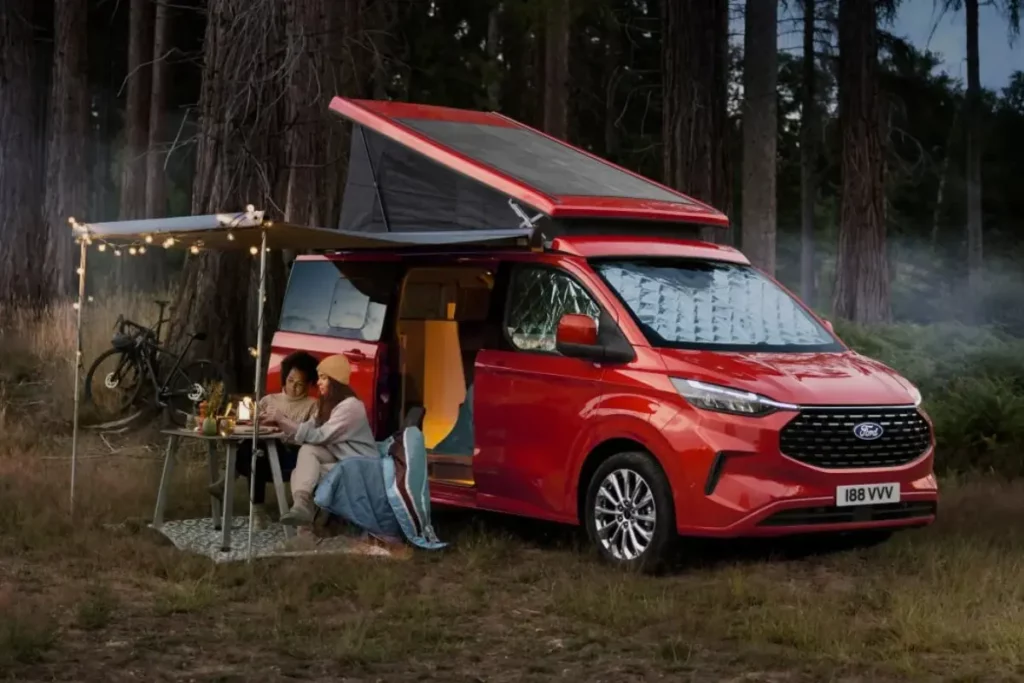
You might be thinking, “Alright, I get what payload is – but how much does it really matter? I just want a comfy camper!” Trust me, it matters a lot. Here’s a few reasons.
1. Legal reasons you want to pay attention to payload
In the UK, most camper conversions (including your Transit Custom) need to come in at or below 3.5 tonnes (3,500 kg) total if you want to drive on a standard car licence.
Exceeding that isn’t just a paperwork issue – it’s outright illegal to drive an overloaded van. Overloading a van can get you fined and even stopped from driving further.
Authorities like the police or DVSA can do spot checks, and if your camper is overweight, you could face penalties on the spot. Fines typically start around £100 for minor overweight and can go up to £300 for more serious overloads (15% or more over the limit). Go 30%+ over, and you might even get a court summons – yikes!
Even a small overload can technically earn a fine, though in practice examiners often allow up to about 5% leeway before issuing a penalty. But here’s the catch: that leeway is not guaranteed, and your insurance might consider you in breach even if you’re just 1% over.
In my opinion, you should always aim to stay under the limit, period. It’s not worth dancing on the line. If you’re at 3.52 tonnes, you’re technically illegal (and an insurer could use that as an excuse to wriggle out of a claim if you have an accident).
2. Overloaded vans are unsafe
Legalities aside, there’s the practical safety aspect.
Your Transit Custom was designed with a certain max weight for a reason. Go over that, and the van’s handling can change in unpleasant ways. An overloaded camper will have longer braking distances, less responsive steering, and can strain suspension and tyres.
Think about it – your poor van’s brakes have to work harder to slow all that extra mass.
I’ve driven a Transit Custom that was (unknowingly) a bit overweight, and on a downhill stretch I could feel it struggle to stop as promptly as it should. Not fun when you’re approaching a roundabout!
Overloading also risks tyre blowouts (too much weight on them causes excess heat) and can even lead to suspension failures over time. In short, it’s dangerous for you and others on the road.
Skip the DIY Hassle - Let Us Handle It!
Save yourself the guesswork with our custom Transit conversion packages.
3. Exceeding the pay limit can cause damage to your Ford Transit Custom
Like I just said, overloading will wear your van out fast. Bearings, brakes, tyres, engine – everything runs hotter and harder.
I’ve seen this firsthand when I was doing repairs on vans. A customer brought his van in twice in the span of a few months with different issues. He thought he was cursed!
It wasn’t until I helped him with the payload calculations that we realised it was 10% overweight. Yeah, that’ll do it!
Keeping your full conversion within payload limits means your van will thank you with a longer life and fewer breakdowns.
4. Overloaded vans make it harder to claim insurance
I touched on this but it’s worth reiterating – if you’re overweight and something goes wrong, insurance can become a nightmare.
Imagine having a crash (even if it’s not your fault) and investigators finding your lovely Transit Custom is, say, 200 kg over its limit. There’s a real risk your insurance could refuse to pay out because the vehicle was being used outside of its legal specifications.
No one wants that scenario. Staying within limits means one less thing to stress about on your road trips. You can drive with confidence, knowing you’re safe and legit.
So, payload limits matter for legal, safety, and practical reasons. It’s not just red tape – it’s about making sure your campervan adventures are worry-free. Now, let’s get into how this actually affects your conversion choices and what you can do about it.
How Will Payload Actually Affect My Ford Transit Custom Build?
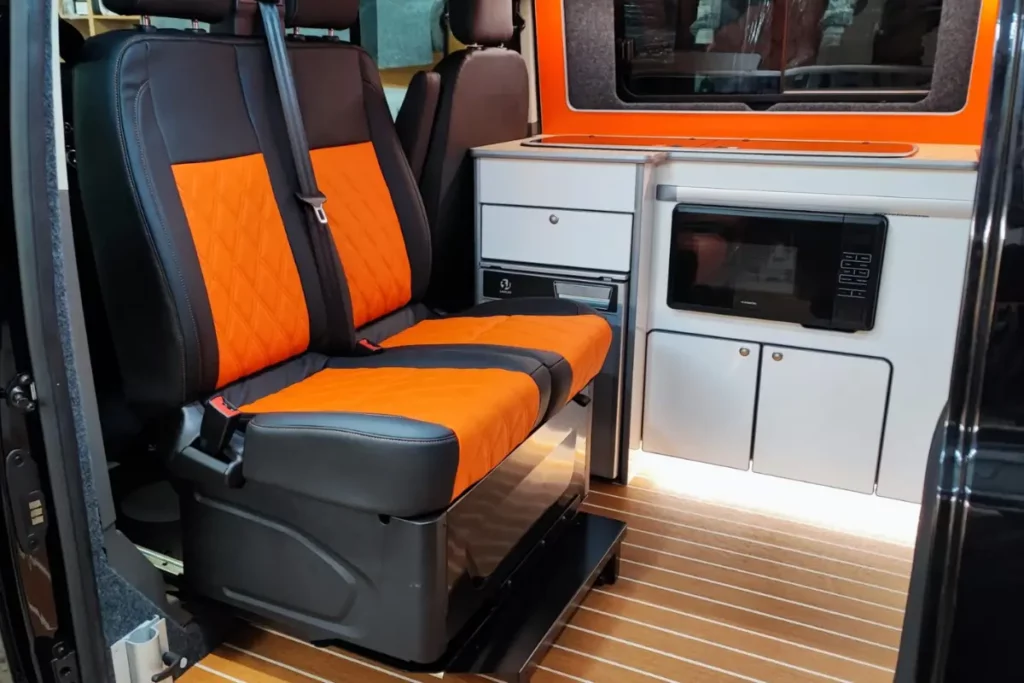
Alright, so we know we have a weight budget to stick to. But how does that influence the fun part – building out your campervan and choosing all the cool features?
In my experience, understanding your payload limit will guide a lot of your conversion decisions, from materials to layout to what you pack for trips.
A real-world payload example
Let’s break it down with a real-world example. Suppose you have a Ford Transit Custom with about 1,000 kg of payload capacity (a pretty common scenario for a medium-spec van). Here’s how that 1,000 kg might get used in a typical camper conversion:
- People: Two adults = ~150 kg (obviously this will change according to your situation but let’s go for an average). Have kids or a third friend coming along? Add more accordingly (kids might be 30–50 kg each, another adult ~75 kg). It’s not hard to hit 200+ kg just in passengers if you’ve got a family of four.
- Fuel: Full tank of diesel = ~75 kg. (The Transit Custom’s fuel tank is around 70-80 litres; diesel is about 0.85 kg/L). You won’t always be full of fuel, but it’s wise to account for it.
- Water: Fresh water tank 50 litres = 50 kg (water is heavy!).
- Cabinetry and Furniture: Moderately light build-out using plywood = ~ 200kg.
This is a big variable. A full interior fit-out (cabinets, bed, storage units, kitchen module) in lightweight material might weigh around 100–200 kg. In heavier materials, it could be 300+ kg.
For reference, a typical rock-and-roll bed/seat (steel framed with cushions) can weigh anywhere from 60 kg to 120 kg. The kitchenette unit with a stove, sink, and cabinets might be another 50–100 kg depending on build and materials.
- Appliances & Extras: Fridge (~20 kg for a small 50L compressor fridge), leisure battery (~25–30 kg if AGM, or maybe 12–15 kg if using a lighter lithium battery), solar panels on the roof (~5–10 kg each), a small stove and gas bottle (~10 kg combined), a heater, etc. It adds up.
You could easily have 100 kg in appliances and electrical bits without trying too hard.
- Miscellaneous gear: Bedding, pillows, camping chairs, table, clothes, food, tools, porta-potti, etc. I’ve seen folks pack 200 kg of gear on top of the fixed conversion without realising it – those boxes of tinned beans and the toolbox in the back have weight! But let’s say you’re reasonable and pack about 100 kg of stuff for a trip.
Now tally those rough figures: 200 kg (people) + 75 kg (fuel) + 50 kg (water) + 200 kg (furniture) + 100 kg (appliances) + 100 kg (gear) = 725 kg. That would actually be within our 1,000 kg payload in this scenario, with a decent 275 kg to spare. Not too bad, right?
But notice how even a fairly normal setup used 725 kg. If our van had only a 800 kg payload (some Transit Custom models, especially older or smaller ones, might only have ~800-900 kg capacity), we’d be overweight in that same scenario.
And it’s easy to imagine many cases that push it higher: carry three or four people instead of two, pack a full-size spare wheel and a bike rack with two bicycles (there’s another ~50+ kg), upgrade to a second leisure battery or a larger fridge, opt for a 70 L water tank – suddenly you’re flirting with the limit or over it.
The key point: Payload is a zero-sum game. More weight in one area (say, a heavier fridge or an extra solar panel) means less available elsewhere. Every decision in your build has a weight consequence. This doesn’t mean you have to strip everything down to bare bones – it just means you keep weight in mind as a factor, much like budget or space constraints.
Upgrade Your Camper with a Pop-Top Roof
Transform your van into a multi-level living space. Pop-Top Roofs add a second sleeping area and more space.
Designing Your Campervan with Payload in Mind (My Approach)
When a van owner (like you) comes to me wanting a camper conversion – whether it’s a Ford Transit Custom, VW Transporter, or any similar van – one of the first things we chat about is weight.
I know, I know… talking about weight isn’t glamorous. Folks would rather discuss cool LED lighting or the sound system or those cute rustic cabinets. But I like to gently work payload considerations into the planning stage from day one.
That way, we don’t run into nasty surprises later (like finding out the finished camper is 100 kg overweight and having to rip things out – no fun).
Here’s how I typically approach a conversion with payload in mind:
Step 1: Know your baseline (weigh the van empty)
First, we find out exactly what we’re working with. I’ll either look up the van’s spec plate or physically weigh the van empty. In the UK, every van has a plated weight sticker (usually in the driver’s door frame or under the bonnet) that tells you the maximum allowed weight (MAM) and the axle limits.
For example, it might say “GVW: 3000 kg” and also list front axle max (say 1600 kg) and rear axle max (say 1600 kg). I note those down.
But I also like to get the actual empty weight of the van as it’s sitting before conversion (especially if it’s not brand new). There’s a public weighbridge in Derby not far from our workshop, and I often take vans there pre- and post-build.
Suppose the empty van (with maybe half a tank of fuel) weighs 1,900 kg on the scale and the GVW is 3000 kg – I then know we have 1,100 kg to play with for everything else.
Knowing the starting weight is important because sometimes the “official” kerb weight in brochures doesn’t include things like an existing bulkhead, or that heavy-duty towbar that a previous owner added, etc.
I once weighed a Transit Custom that was supposed to be ~1,800 kg empty according to the manual, but it came in at 1,950 kg because it had a bunch of dealer-fitted extras (like a second battery and shelving). That 150 kg discrepancy could have led us astray if we didn’t actually check. So, Step 1: know your baseline.
Step 2: Plan the layout and features with weight in mind
When I plan a Ford Transit Custom camper conversion for a client, I actually create a little weight spreadsheet (nothing fancy, even a notepad will do) and list all the major components and an estimate of their weight.
If you’re stuck with what you should be considering in your tally, here are some of the major components and the decisions you might have to make when thinking about weight.
Materials for furniture & cabinets
This is huge. The material you use for building cabinets, bed frames, etc., can dramatically affect weight. I’ve learned to favor lightweight plywood (often a poplar ply or similar) over heavy MDF or particle board.
For instance, using 12mm plywood instead of 18mm MDF for your cabinets and bed can save a significant amount of weight – we’re talking many tens of kilos saved.
One couple I know calculated they saved 35 kg just by building their own kitchen cabinets out of 12mm ply instead of using pre-made IKEA kitchen units (which are usually double-layer MDF).
In my workshop, we stock special lightweight furniture ply for this reason; it’s a bit pricier but it’s designed for camper builds and can easily save 20-40% weight on all your cabinetry. If DIY-ing, look for poplar or birch ply instead of MDF or heavy hardwood sheets.
Smart cladding & flooring
Everyone loves the look of a fully clad campervan interior with wooden planks, and a nice thick floor, etc. But here’s a trick I use: only clad what you’ll see.
There’s no point adding timber cladding or thick carpet lining on sections of the walls that will be hidden behind cabinets or the bed. It just adds weight for no benefit. We often stop the wall cladding right where the kitchen or wardrobe will start, leaving the rest as the plain lightweight lining or even bare metal behind the units (no one sees it anyway).
Same with flooring – we might not run heavy plywood subfloor under the areas we know will be filled with cabinetry. These little cheats can easily save 10, 20, 30 kg of unnecessary material while still giving you the fully finished look in the living areas. The idea is, don’t double up on structure where you don’t need to.
Beds and seating
A RIB bed (bench seats that turn into a bed) is often one of the heaviest single items in a small camper. Some of the nicest ones (with crash-tested metal frames) can weigh 90–100 kg on their own.
A custom bed frame will be lighter, but keep in mind that a RIB bed can be used as a driving seat. If you want to bring extra people on your adventures, there might not be any way around the RIB bed weight – you’ll just have to save space elsewhere.
Appliance choices
Do you really need a big oven, a microwave, a giant 110L fridge? In a Transit Custom, space is at a premium anyway, and every appliance adds weight (and draws power, which then means more batteries… which adds more weight!).
I usually recommend the essentials: a good efficient fridge around 50–65 litres (which weighs maybe 20kg), a 2-burner hob and sink combo unit (those combined units are compact and lighter than separate ones).
If a client insists on an oven or grill, we’ll include it, but I remind them that it’s not just the oven’s weight – it’s also the extra cabinetry and heat shielding around it. It’s all doable, but we might save weight elsewhere to compensate.
Electrical system
This is one area that has gotten easier in recent years with technology. Old-school conversions often used two or three big lead-acid leisure batteries to power things, and those are heavy (20-30 kg each). Nowadays, lithium batteries are pricey but they weigh about half as much for the same usable power.
For example, a 100Ah lithium might weigh 12kg versus a 30kg AGM battery – and because you can use more of its capacity, you might only need one lithium where you’d need two AGMs. So you could be looking at 12 kg vs 60 kg for your battery bank – a huge saving.
Whenever budget allows, I guide people toward lithium for this reason (and the performance benefits, of course).
Also, I plan where to place heavy electrical components (batteries, inverter, etc.) low down in the van, ideally over or between the axles, so that we are optimising for weight distribution.
Water tanks and plumbing
It’s tempting to go “the bigger the better” for water tanks – who doesn’t want more fresh water for longer off-grid stays? But remember, water is very heavy.
I usually find ~50 litres fresh is plenty for a couple for a weekend of off-grid camping. Some larger builds go 70L or even 100L, but just remember that’s a huge chunk of your payload – 100kg just for water!
I often install around a 50–60L tank and advise that if you need more, you can always carry an extra jerry can (which you can leave empty until you actually need it, or fill only when you’re set up camp and can perhaps leave other stuff behind).
Same for waste water – no need to carry a giant waste tank full; you can usually dispose of grey water more frequently. It’s a balance between convenience and weight.
A friend of mine insisted on a 100L fresh tank in his VW camper, and yes, he could shower a bit longer, but he was constantly worrying about weight. For most Transit Custom builds, 50L (about 50 kg) of water is a comfortable compromise.
Windows, awnings, pop tops and other mods
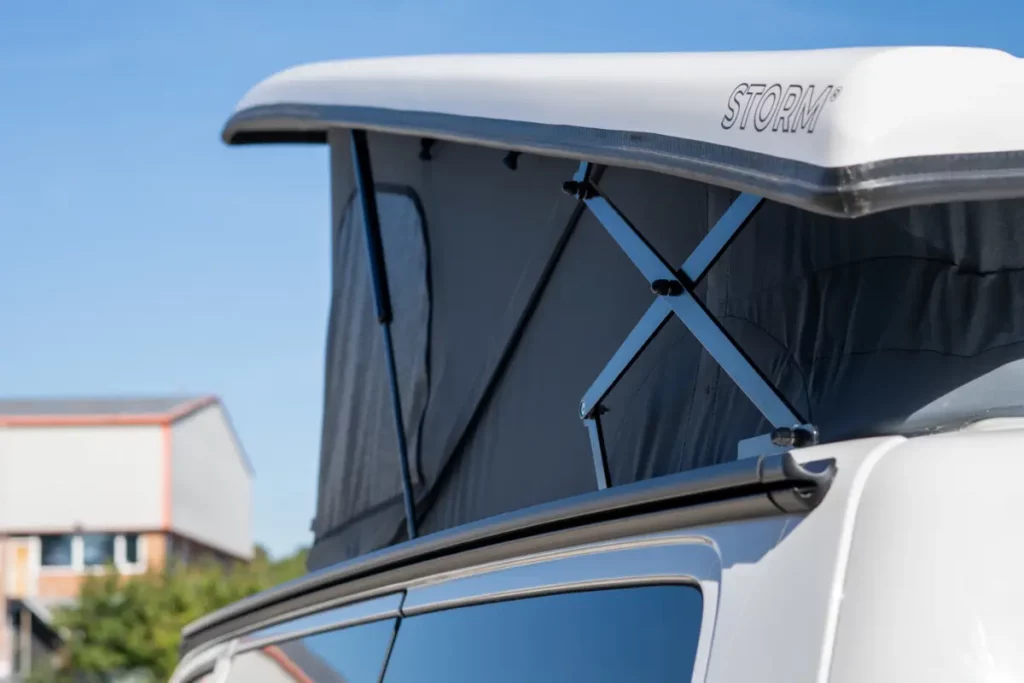
Consider the features you’;re looking to add on to the van. Here are some common features that people like to include in a Ford Transit Custom.
- Pop top roof
- Solar panels
- Bike racks (don’t forget to account for the weight of the bikes themselves, too)
- Windows
- Carpet Lining
- Ladders
- Roof racks
When it comes to add-ons, my philosophy is: include the features that truly matter to how you’ll use the camper, but try to choose lighter versions of those features when possible, and eliminate purely “nice to have but rarely used” items if weight becomes an issue.
It’s a conversation I have often: do you really need a built-in toilet/shower in a Transit Custom? If yes, okay let’s do it but know it’ll add weight. If not, we can save weight with a simple porta-potty and solar shower bag – and use that weight for extra storage or just have more buffer.
Also consider multi-purpose furniture! Wherever an item can serve two purposes, that can save having two separate things. Example: a swivel passenger seat means you might not need an extra lounge chair inside the van.
A foldable table that attaches to the kitchen unit means you don’t need a separate big dining table. Less stuff = less weight.
Never Run Out of Power on the Road
Install solar panels in your camper van for endless energy on your journey.
Step 3: Revise and reconsider
Chances are that your first draft of the van build will be overweight. This is the case for most of the clients I work with, and it’s no big deal.
Adding it up before we build helps catch any red flags early. If the total projected weight was, say, 1100 kg and the van’s payload is only 1000 kg, we know we have to make some cuts or choose lighter alternatives.
Understanding payload in real terms basically guides you to make smart choices: maybe you choose a slightly smaller water tank, or you don’t tile the entire interior with heavy ceramic tiles (I’ve seen someone do this in a DIY build – the tiles alone were like 40 kg!).
Maybe you opt for one 100Ah lithium battery instead of two 110Ah lead-acid batteries, saving 20-30 kg right there. Perhaps you decide a single swivel seat up front is enough instead of both seats swiveling (since the double seat swivel base adds weight).
It’s all about trade-offs that allow you to stay within that safe weight limit while still having a camper that meets your needs.
Now, I know this is a lot of information. The goal isn’t to overwhelm – it’s to show that with a bit of thought and some clever choices, you can have a beautifully equipped Ford Transit Custom campervan and still stay within your payload limit. I do it every day for clients, and many DIY builders manage it too by following similar principles.
Stay Safe, and Enjoy the Adventure
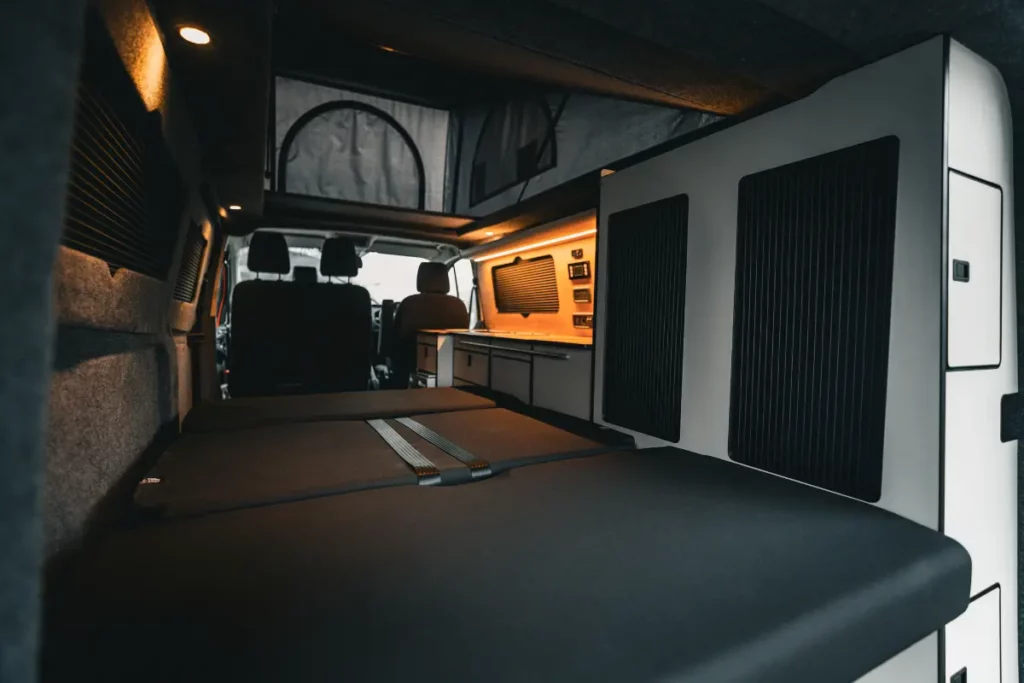
By choosing lightweight materials, planning your layout smartly, and keeping an eye on the scales, you’ll avoid the common pitfall of ending up with an overweight van. I
Instead, you’ll have peace of mind knowing your camper is under the limit, meaning you’re driving legally and safely.
Remember, comfort and payload are not mutually exclusive. You can have a cosy, well-equipped Transit Custom camper and play by the rules. It just takes a dash of forethought and maybe a willingness to trade off a “luxury” or two that you might never miss in the long run.
I hope this chat has demystified payload limits for you and given you some useful tips. If you’re still wanting to learn more on why Ford Transit is good for a camper conversion, check out that blog post.
And if you’re working on your van (or just daydreaming for now) and you’re unsure about something, reach out or drop by Cosmic Campervans if you’re in Derby.
I’m always happy to talk campers, share advice, or even show you how we do things in our workshop. I’d much rather spend a bit of time helping you get it right than see another beautiful campervan stuck off the road due to an avoidable weight issue.
Here’s to many great adventures ahead!



